
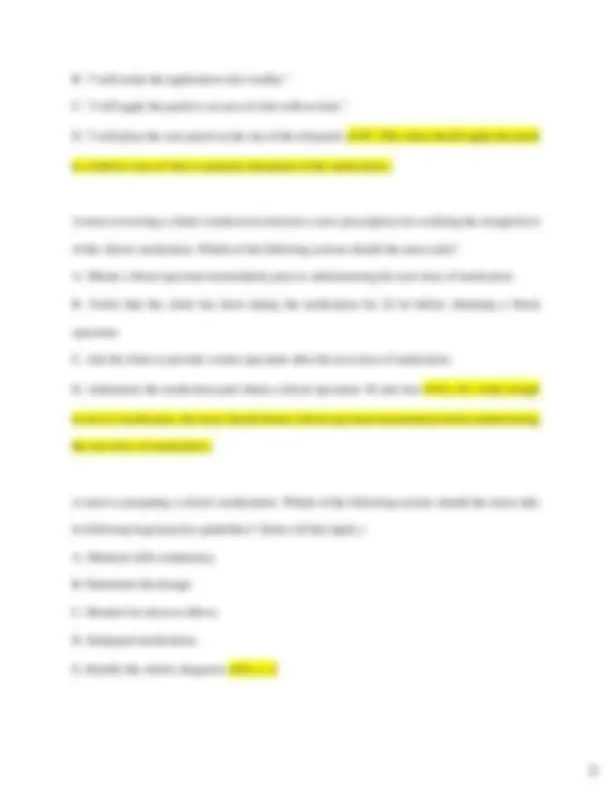
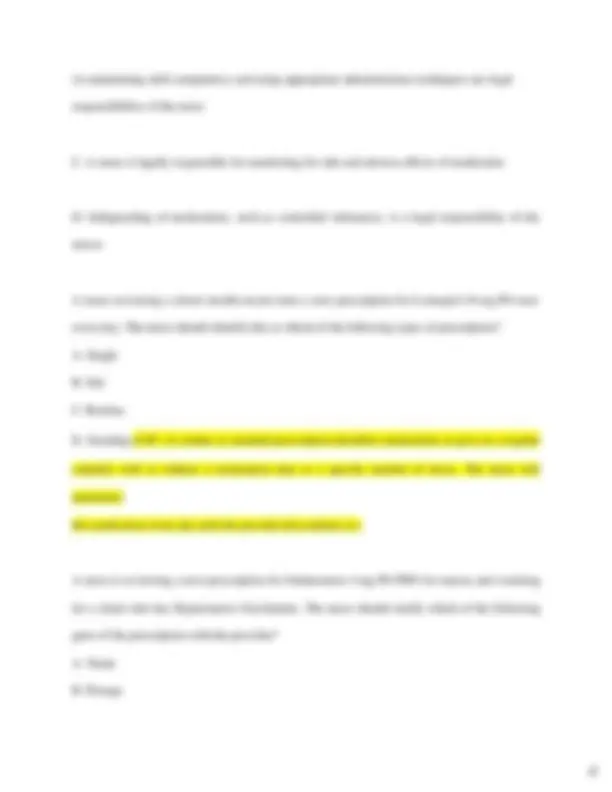

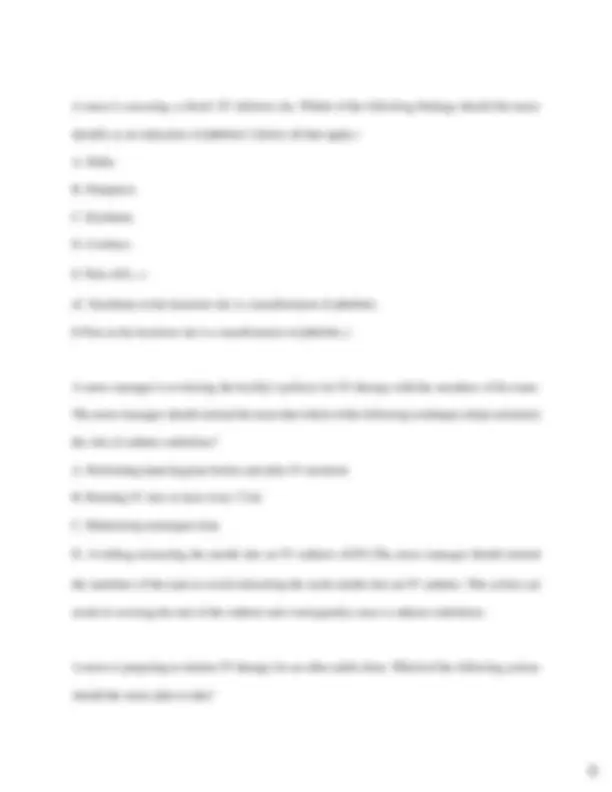
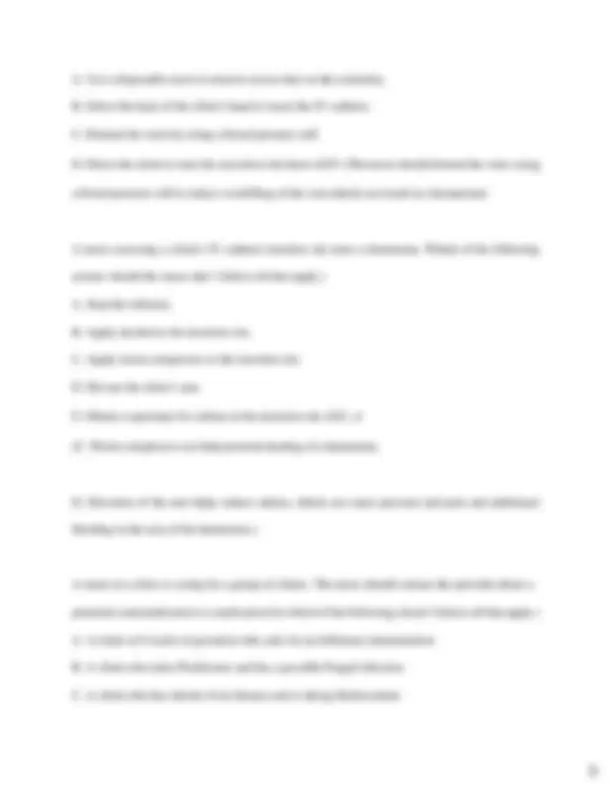
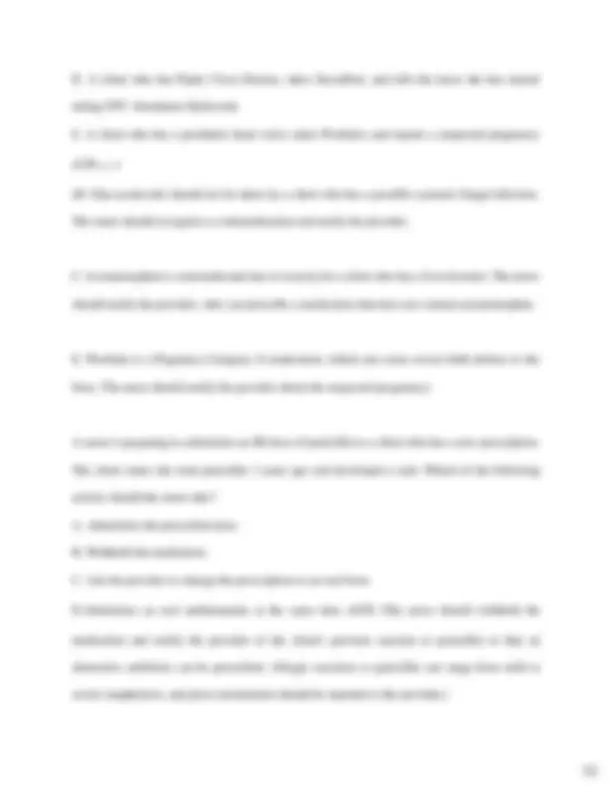

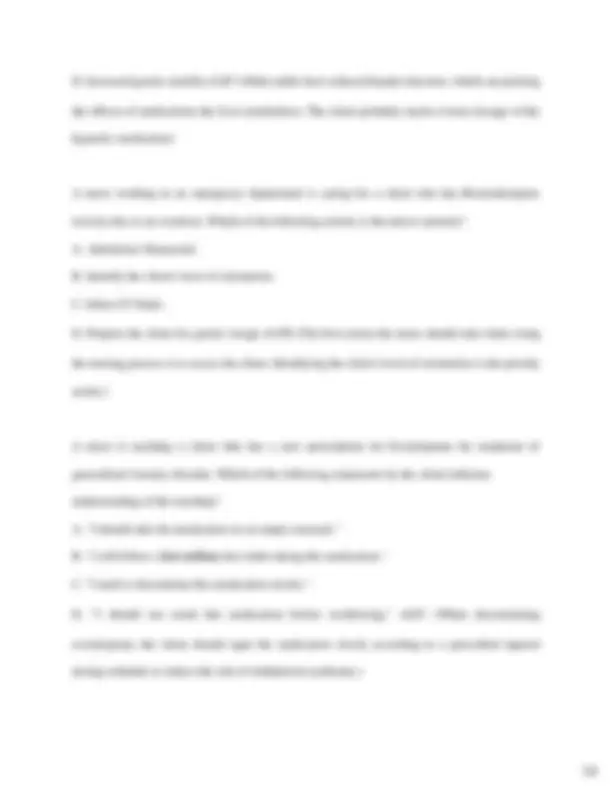
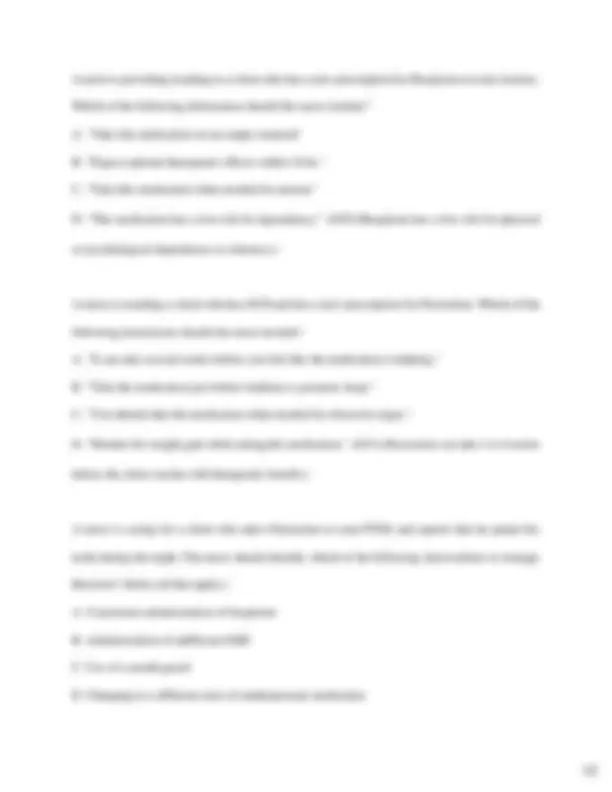
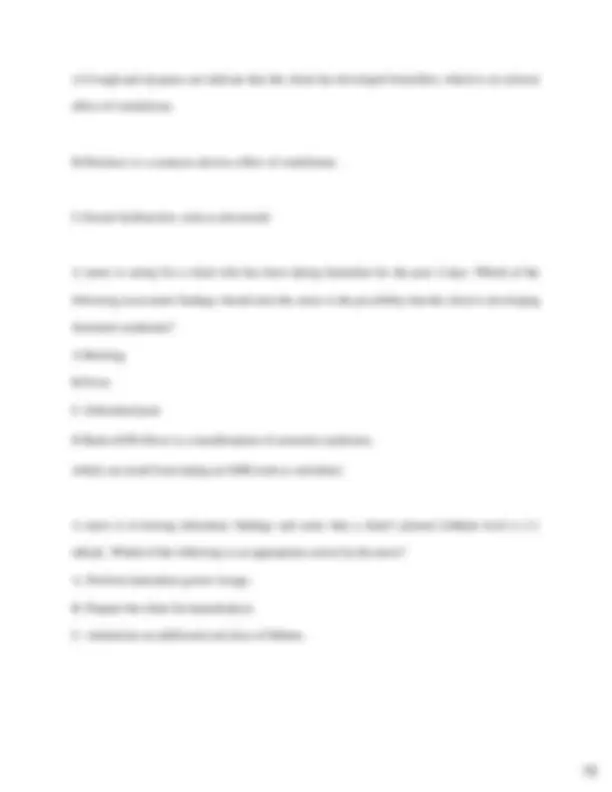
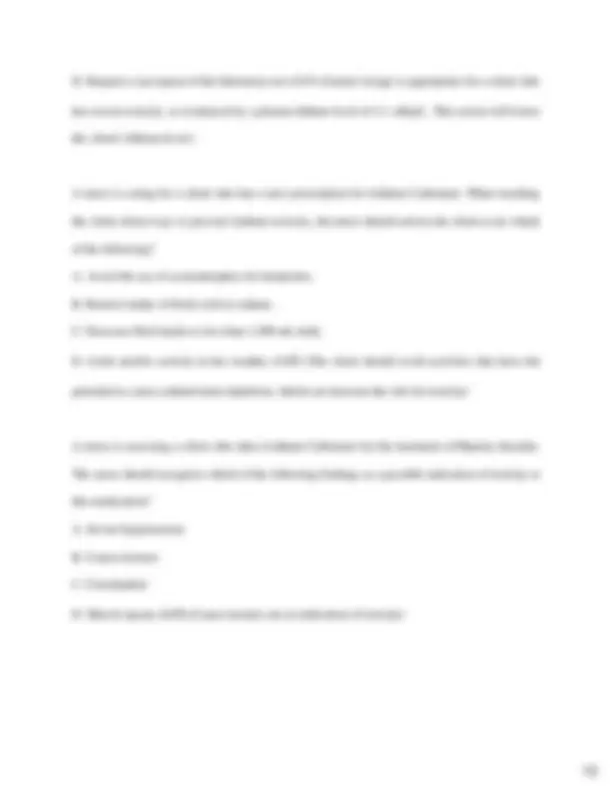
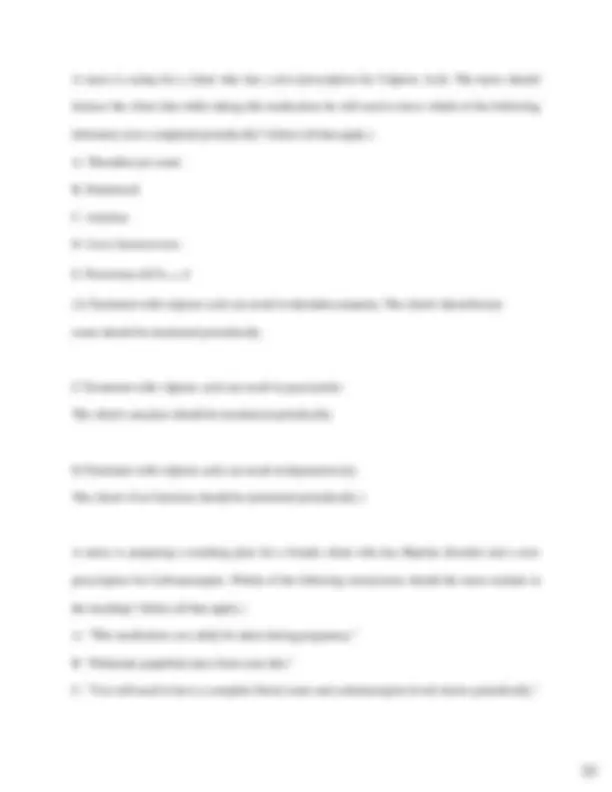
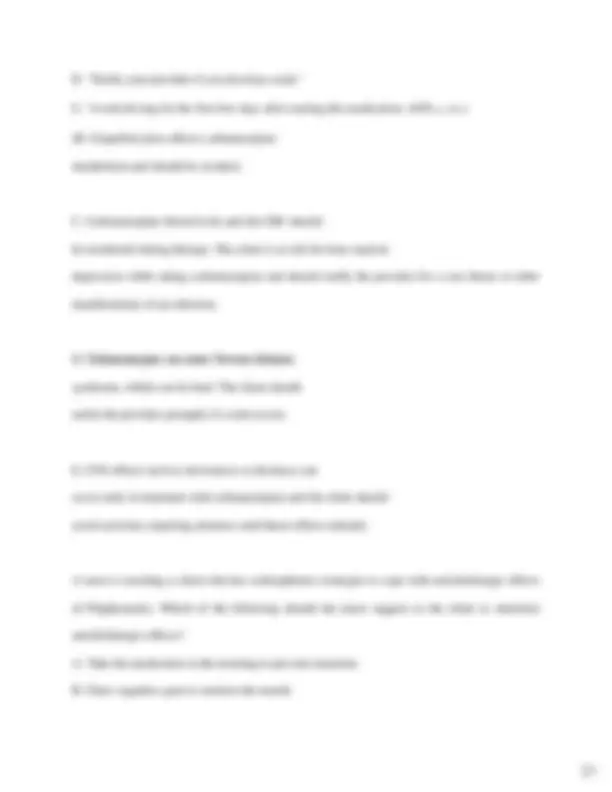
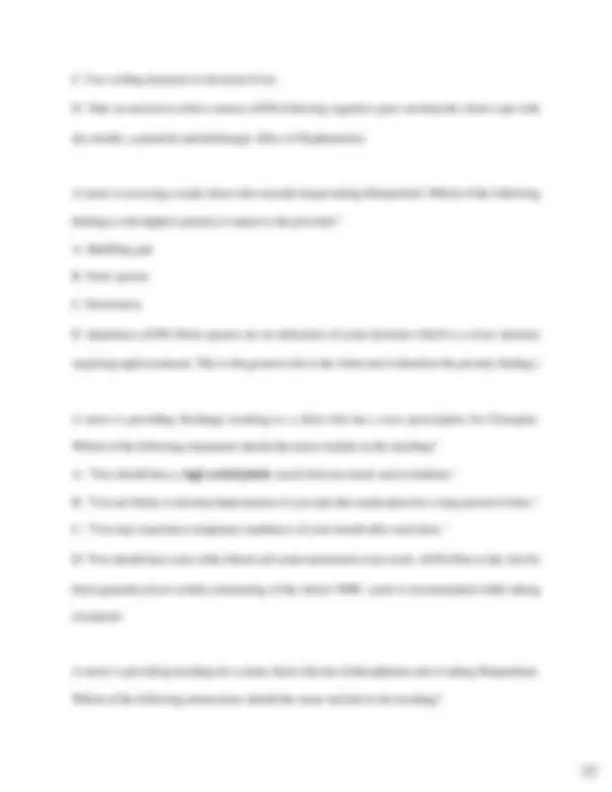
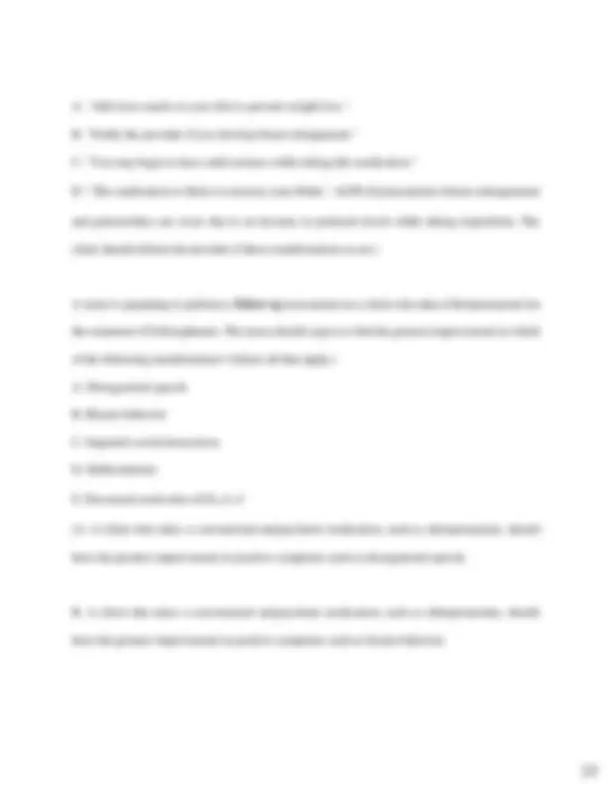
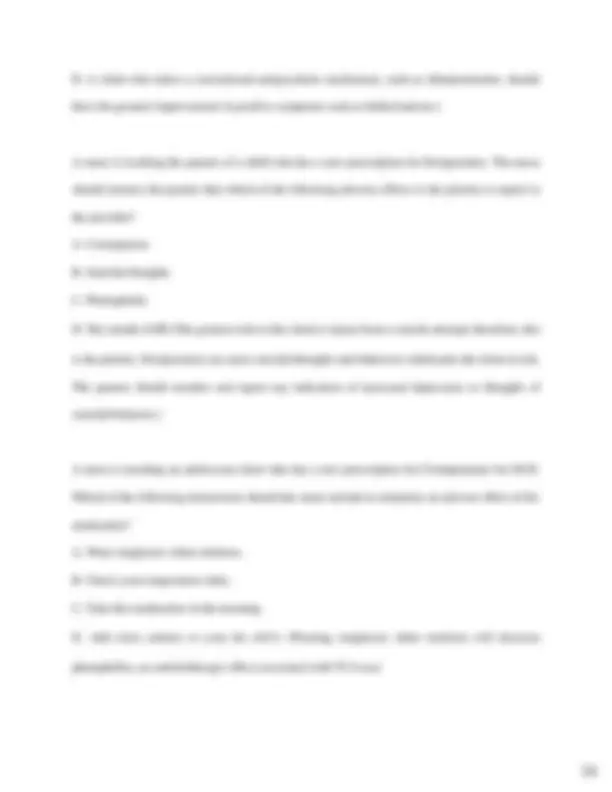
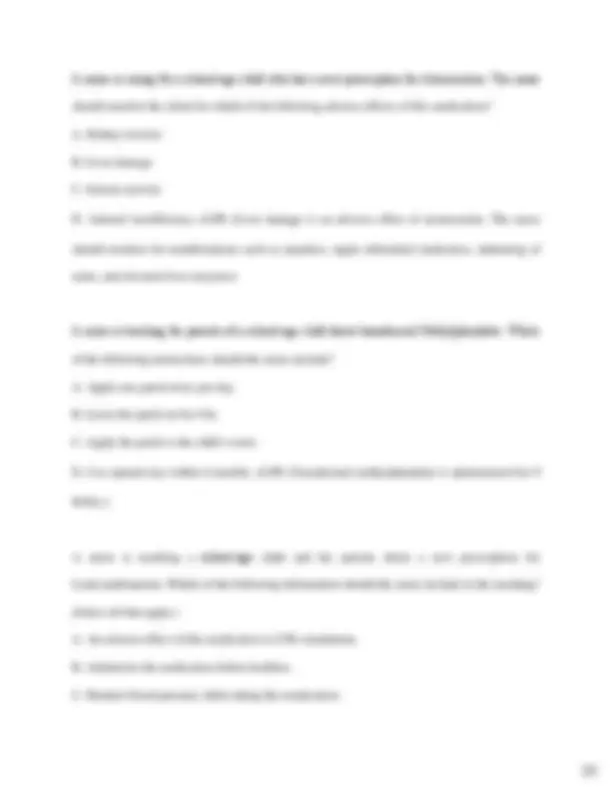
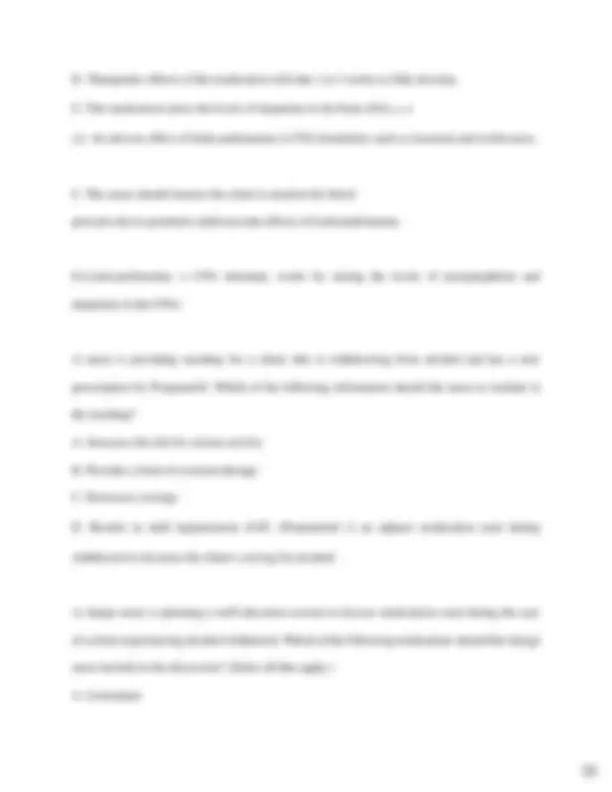
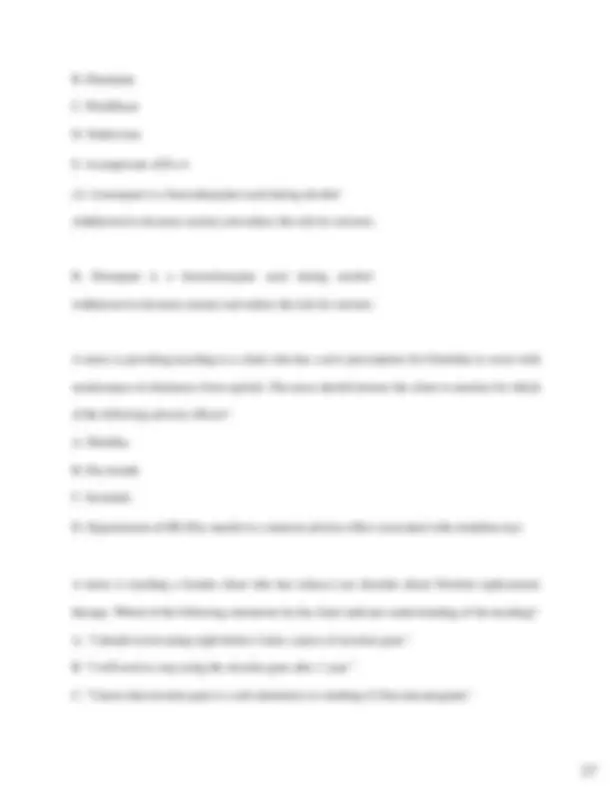
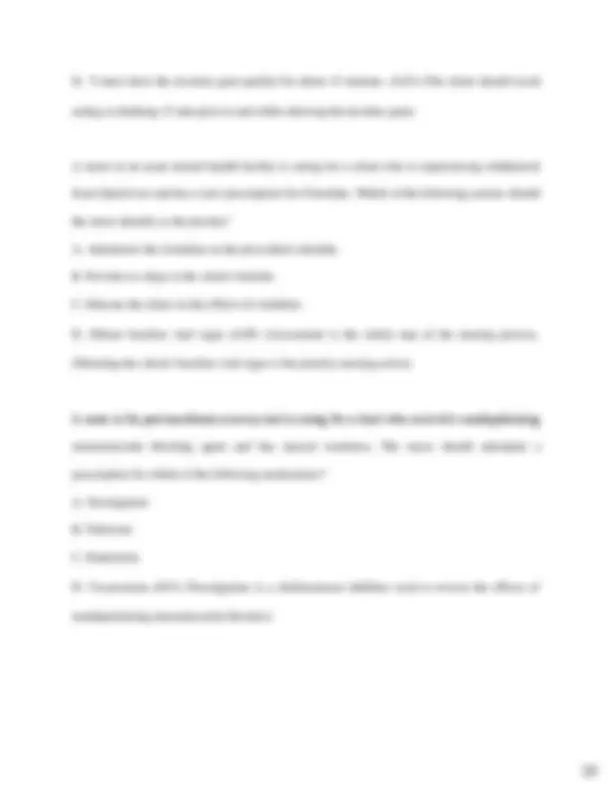
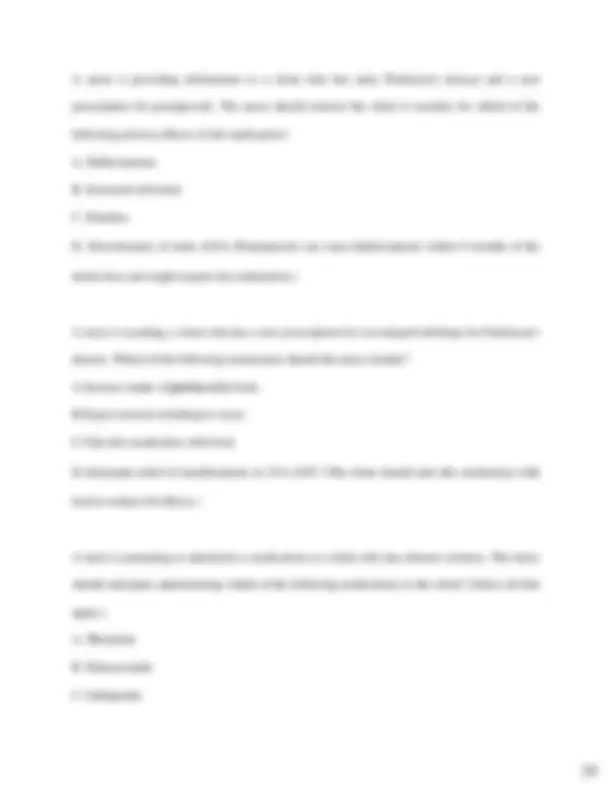
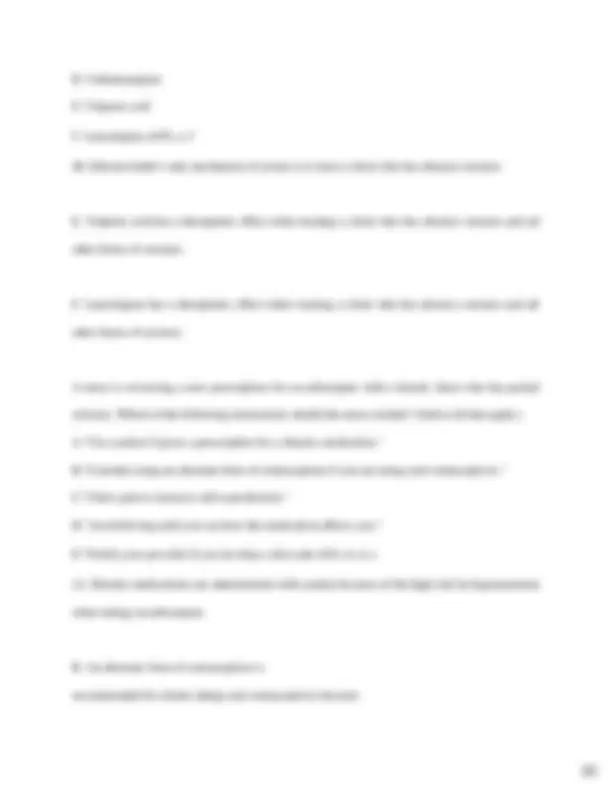
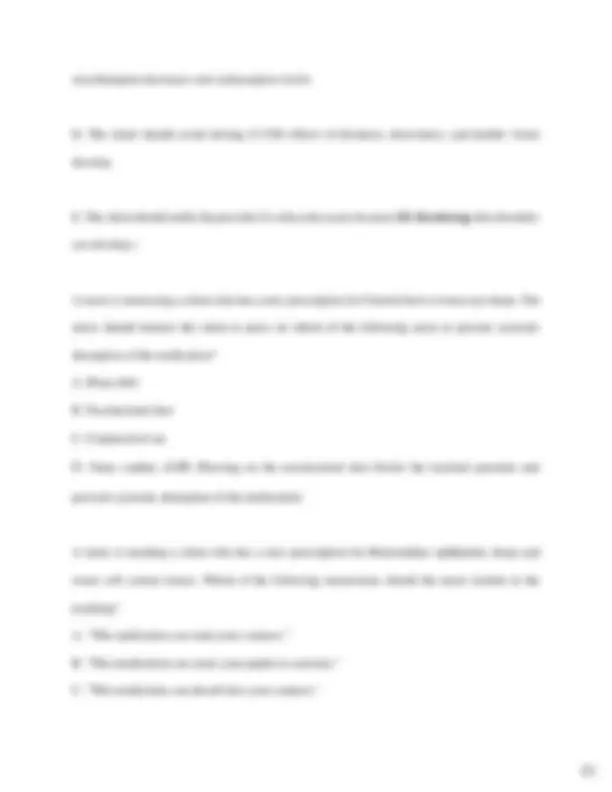
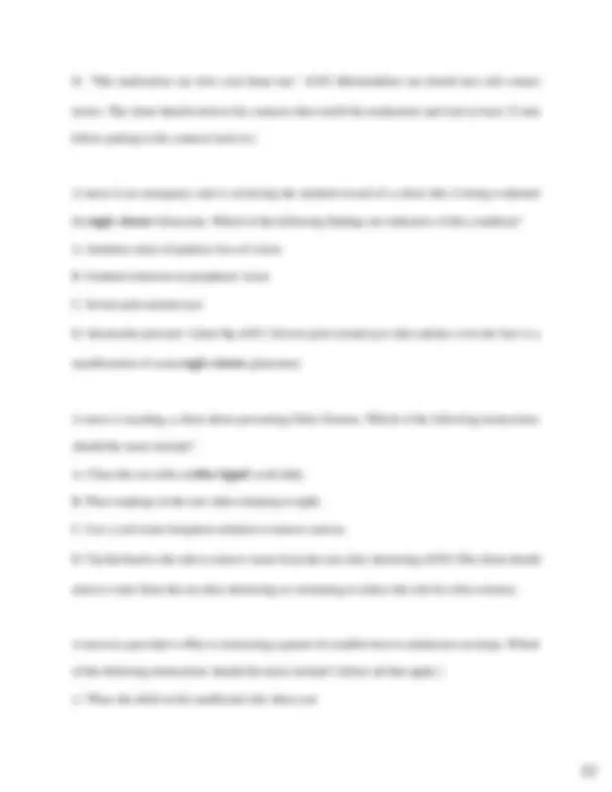
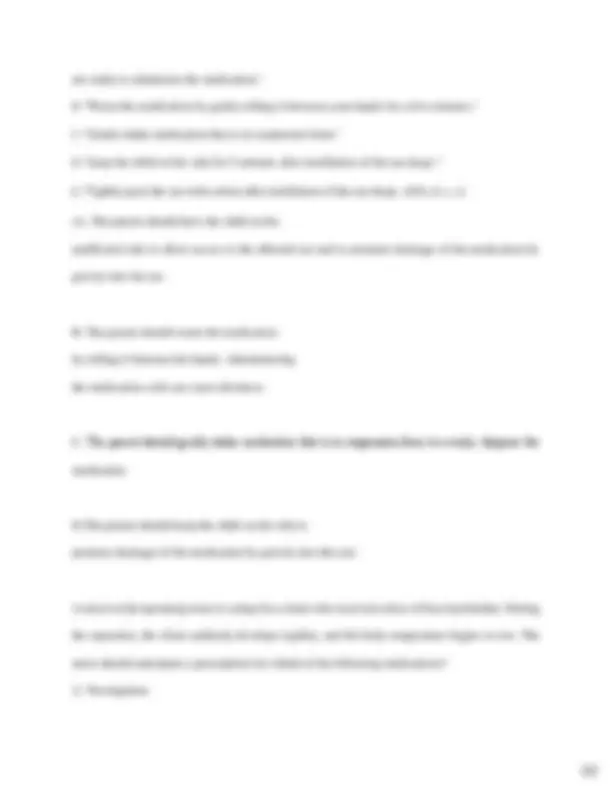
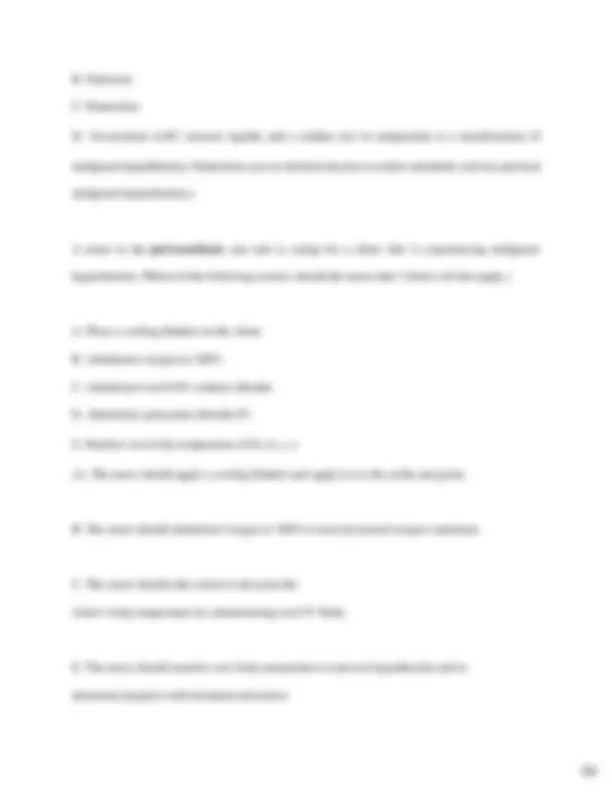
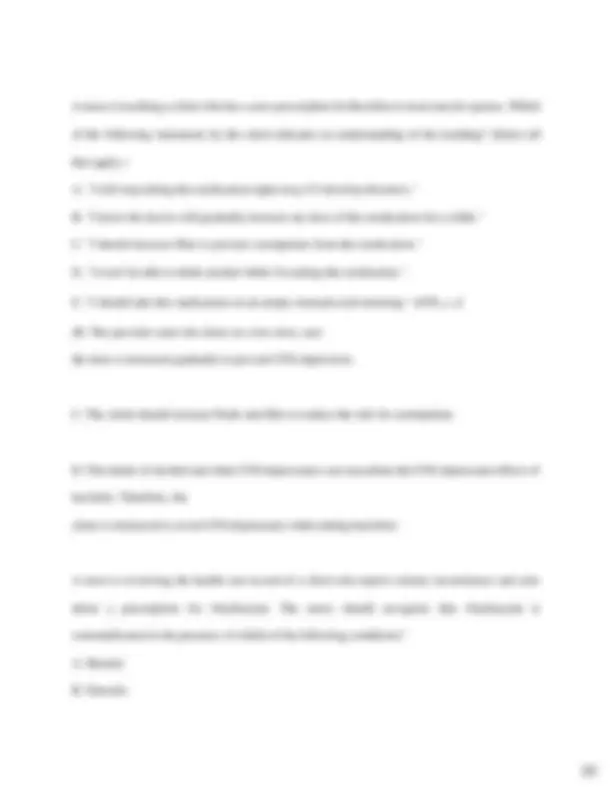
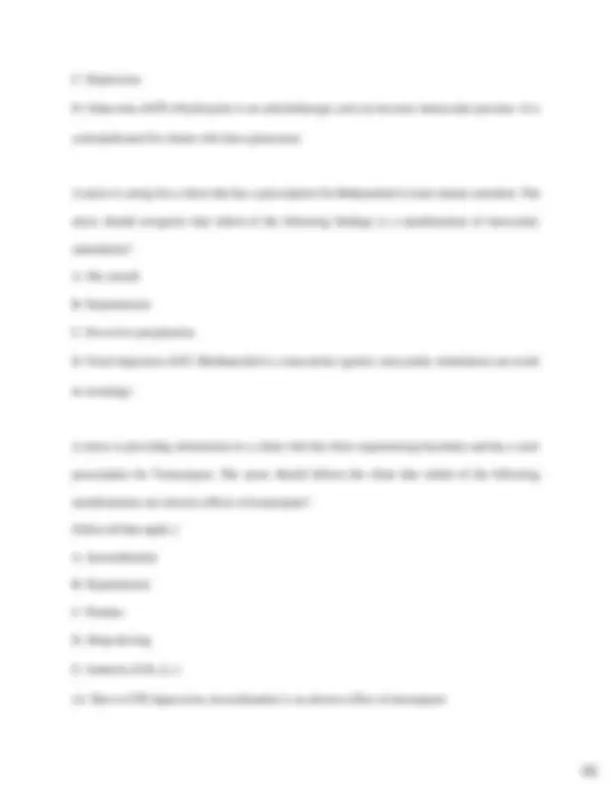
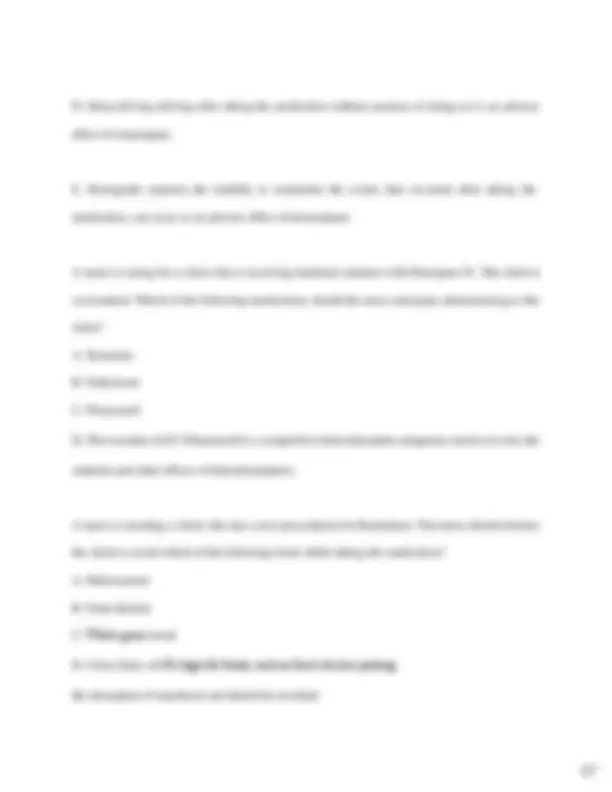
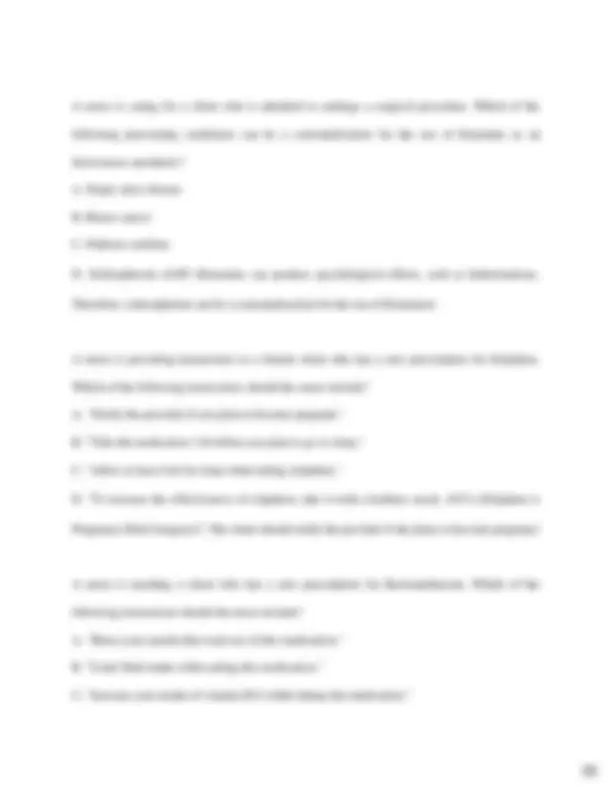
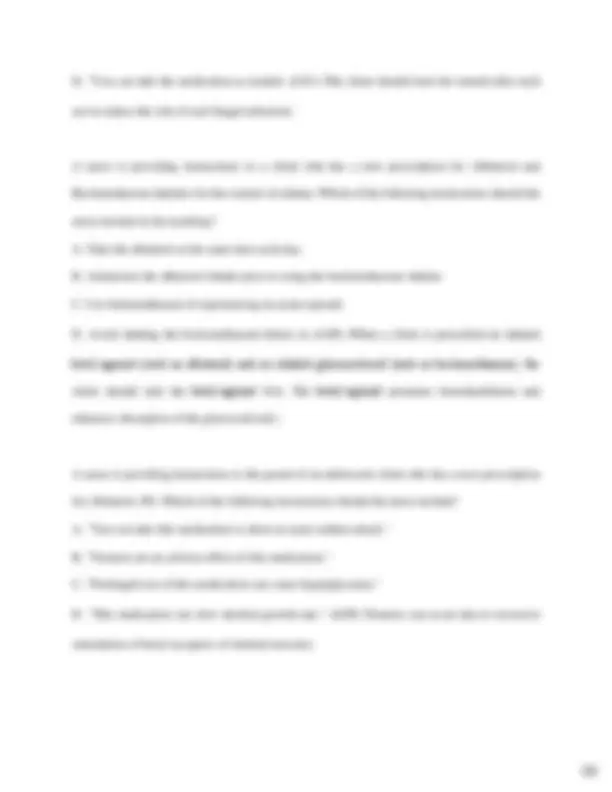
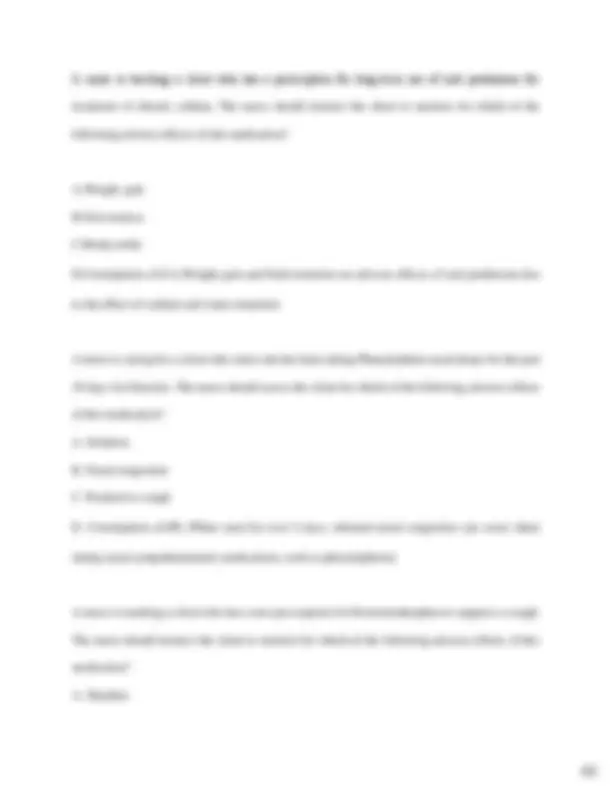
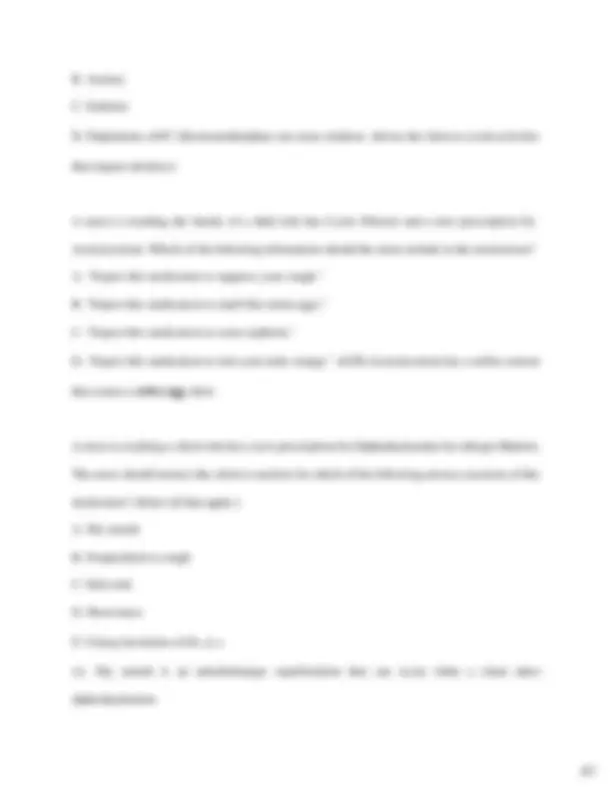
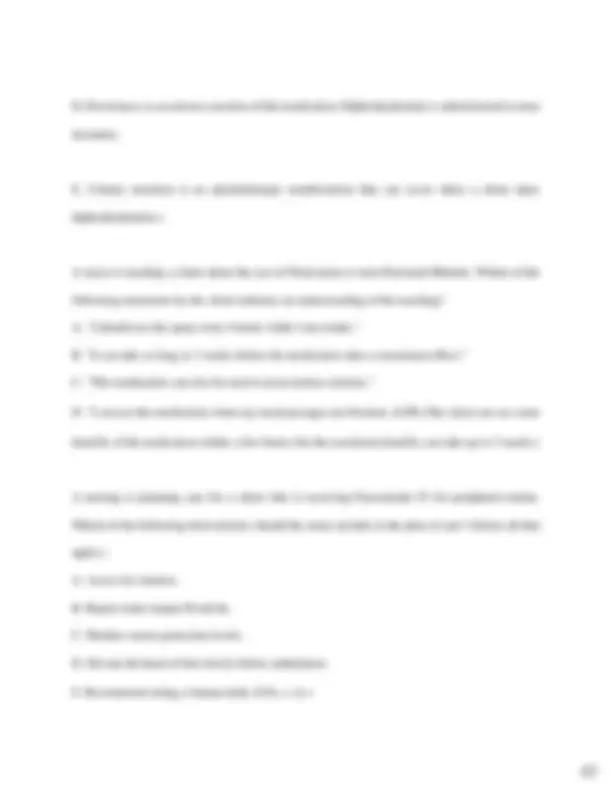
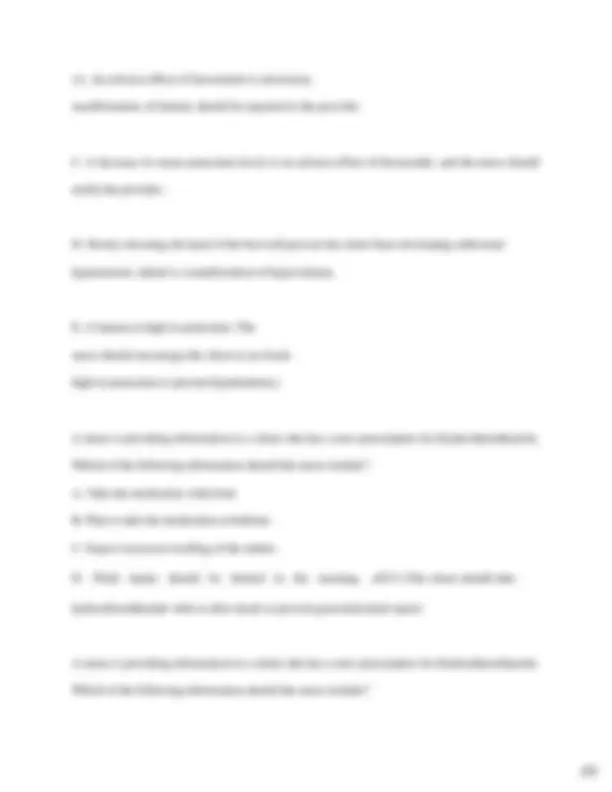
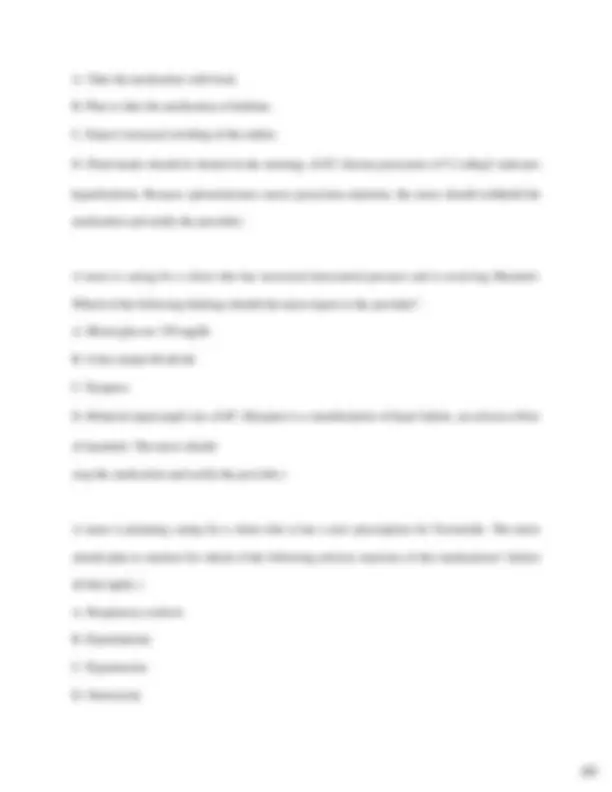
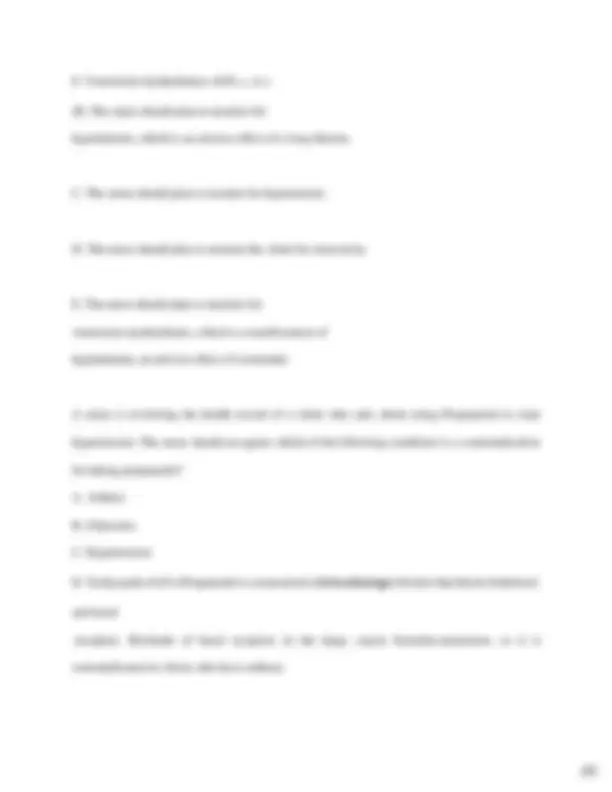
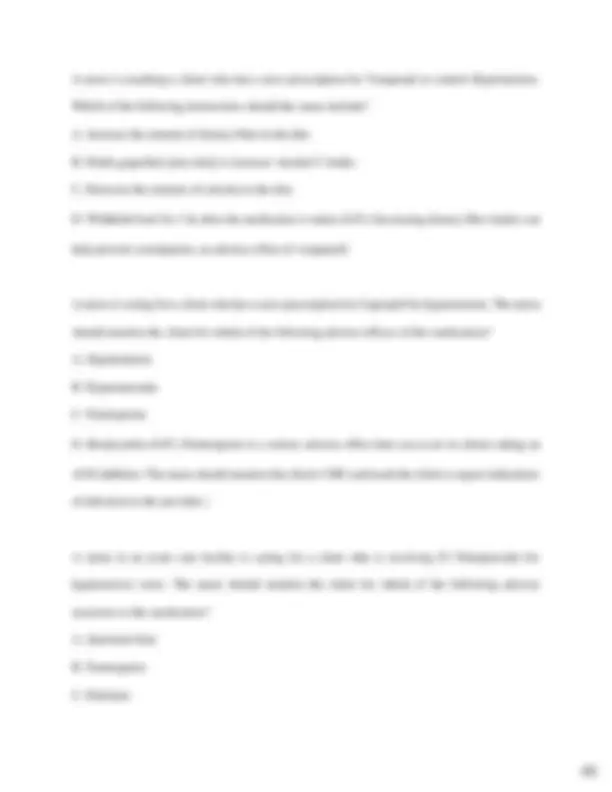
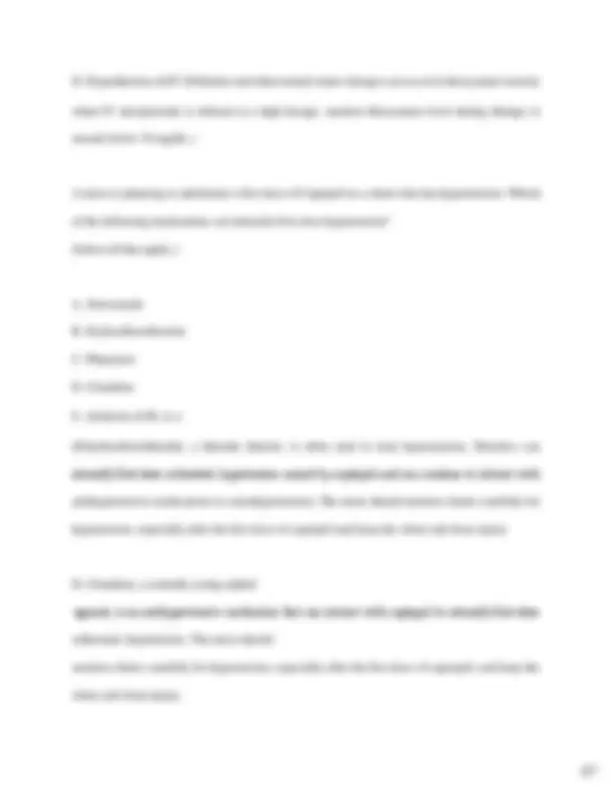
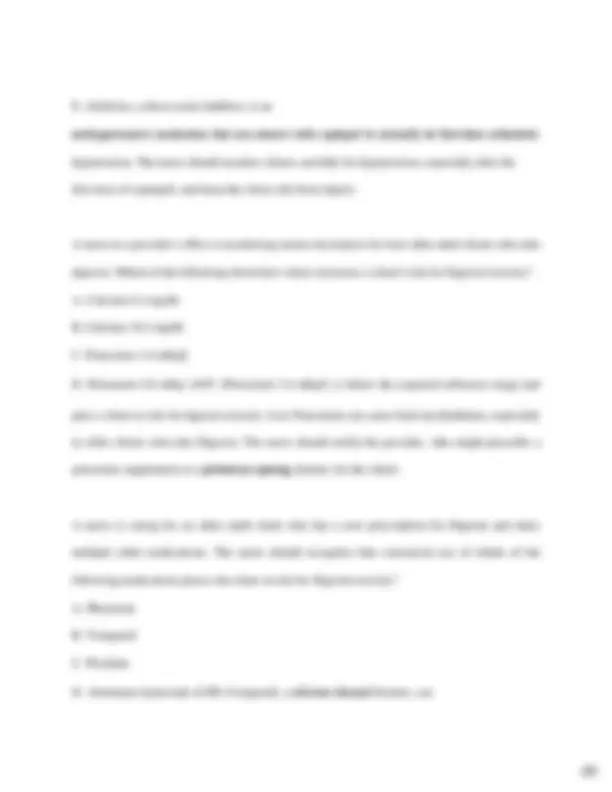
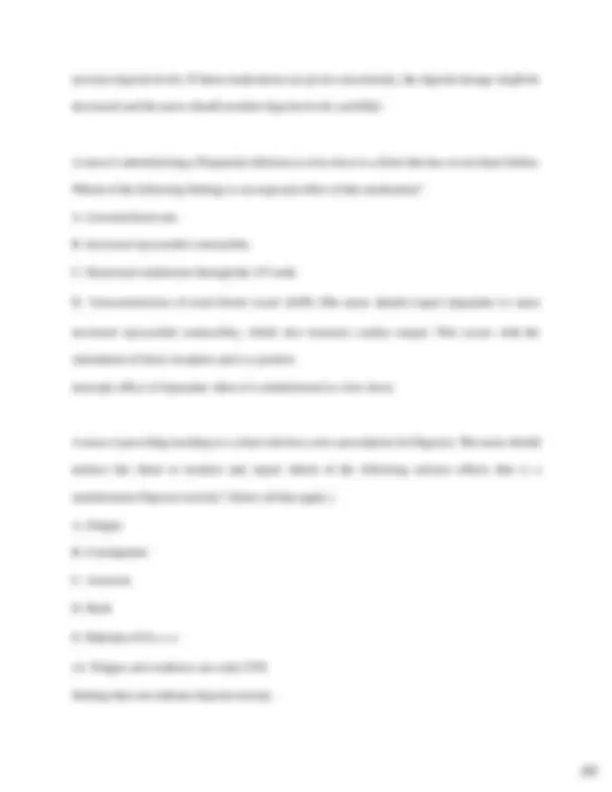
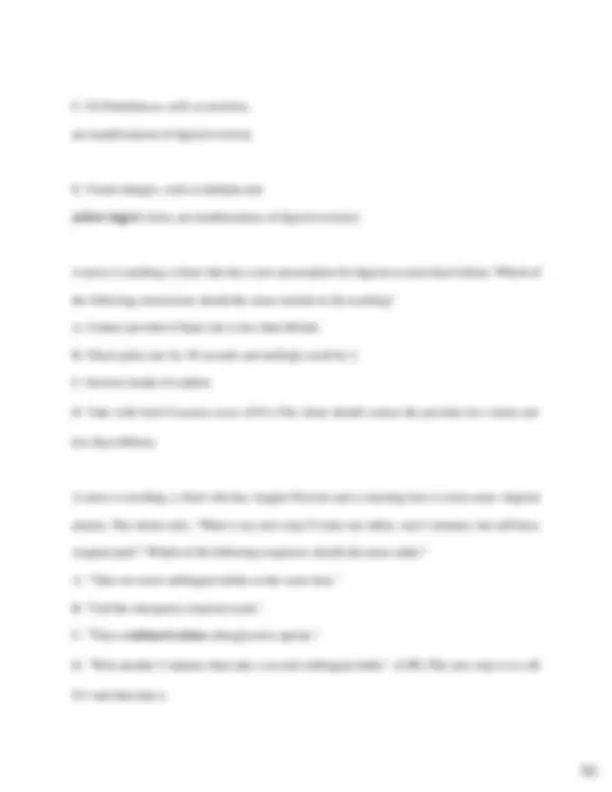
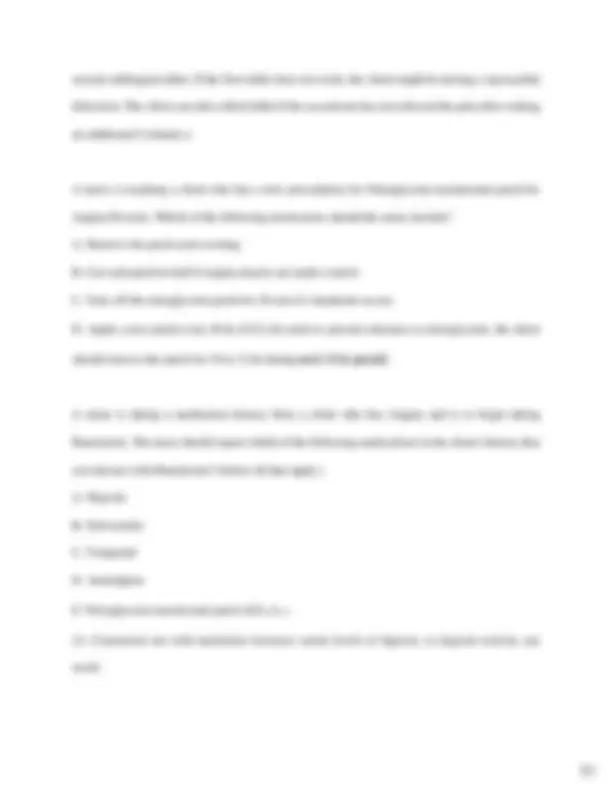
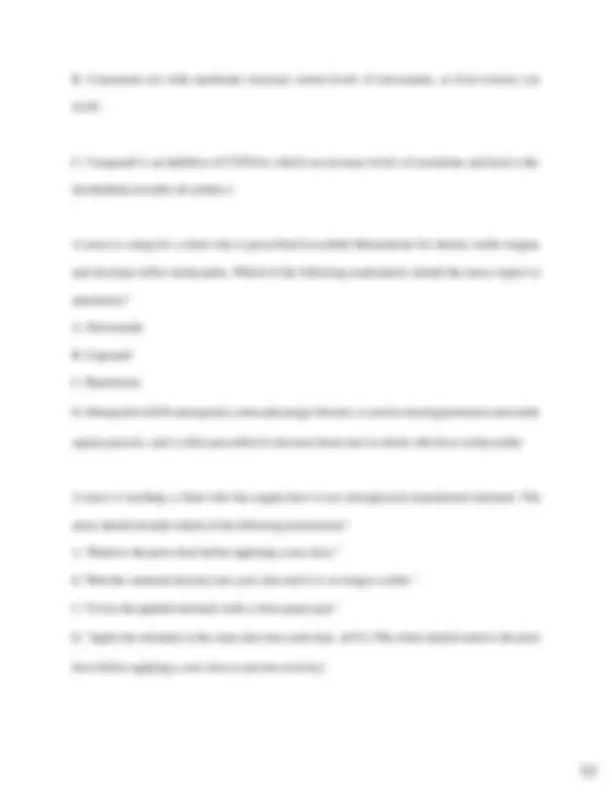
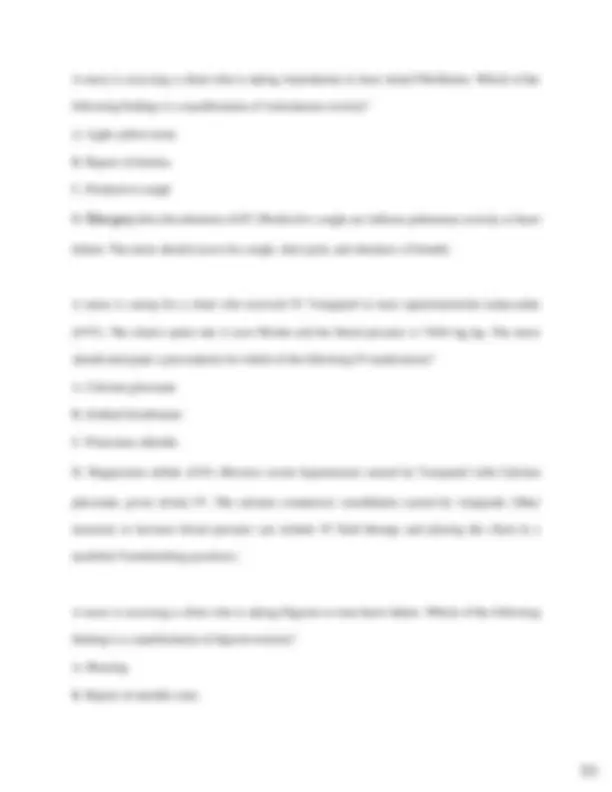
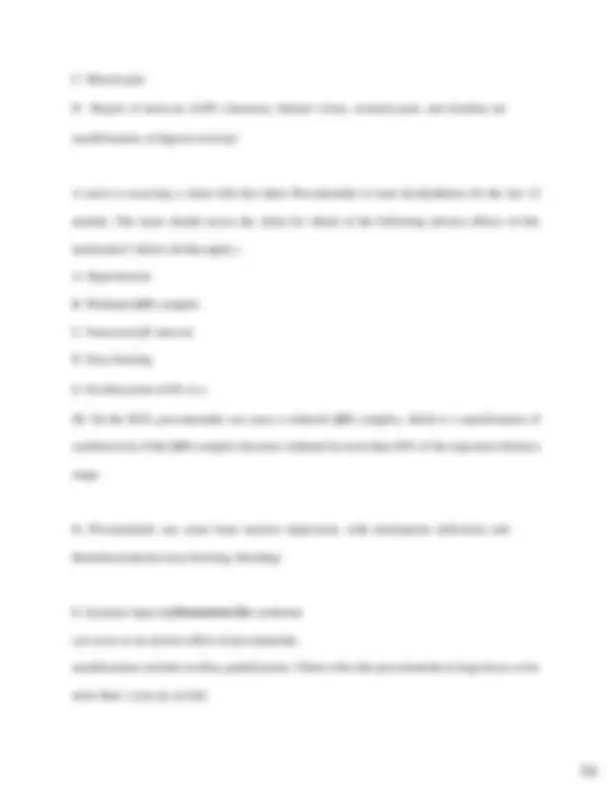
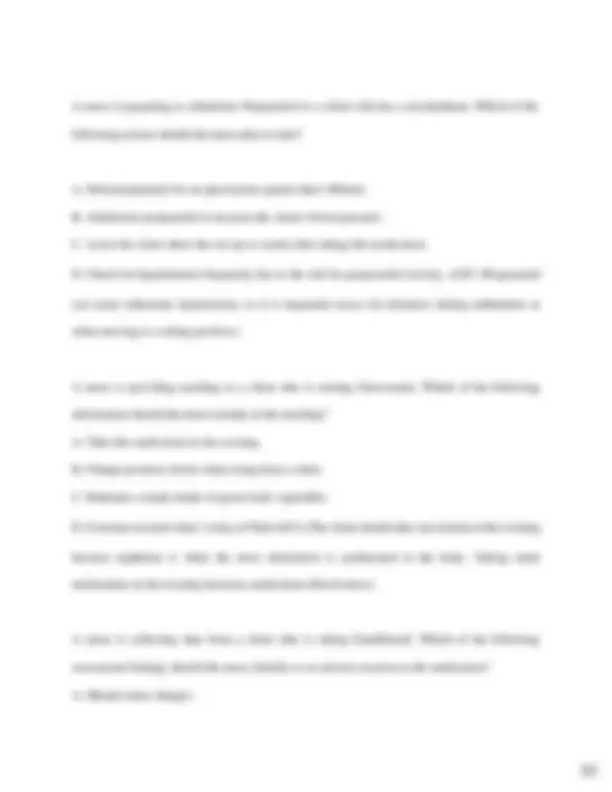
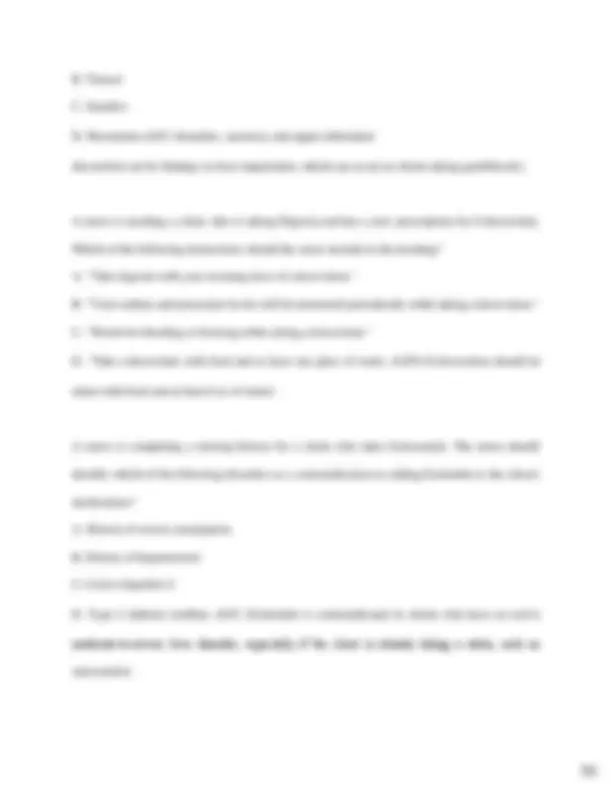
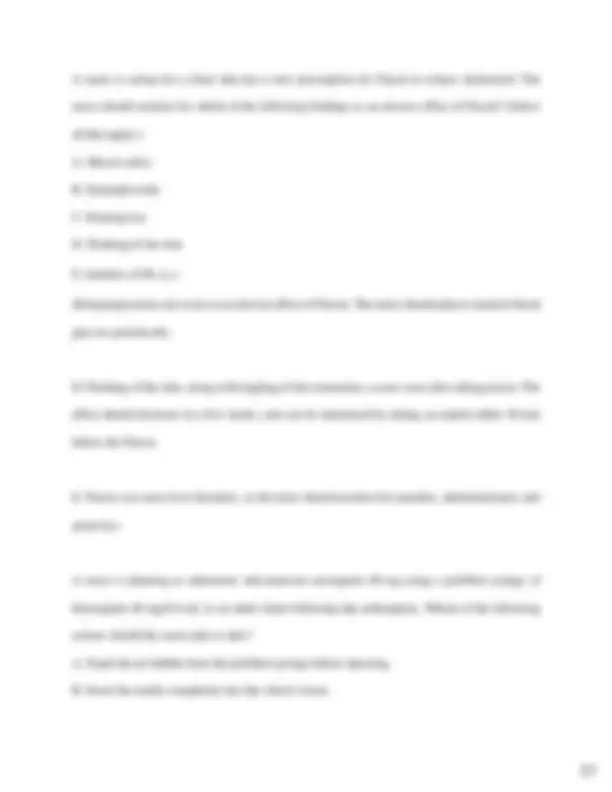
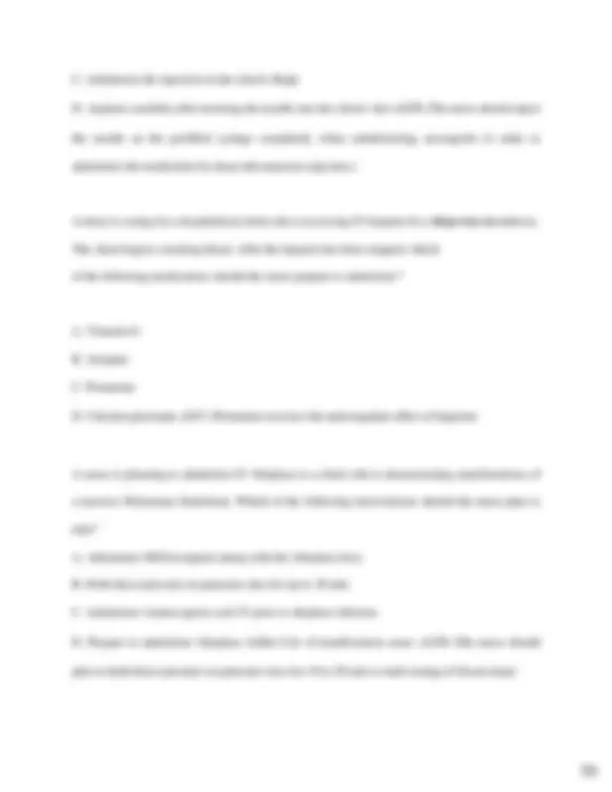
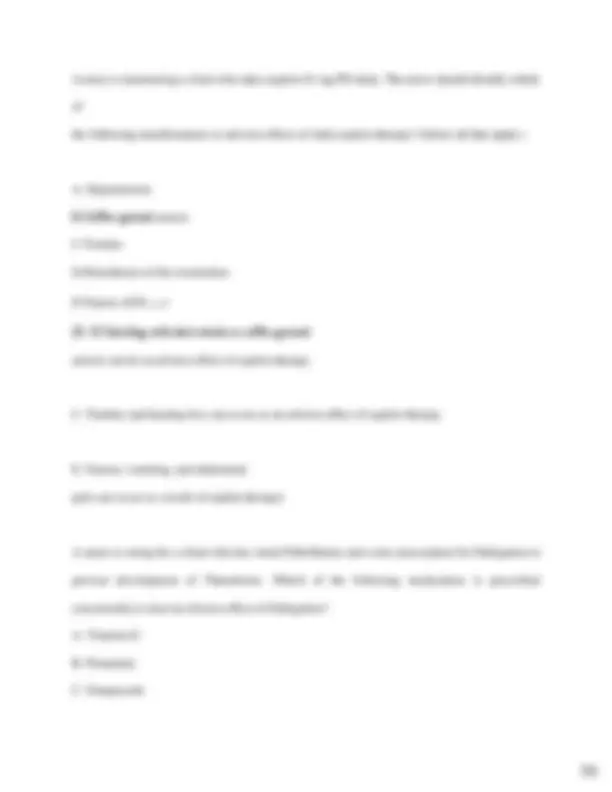
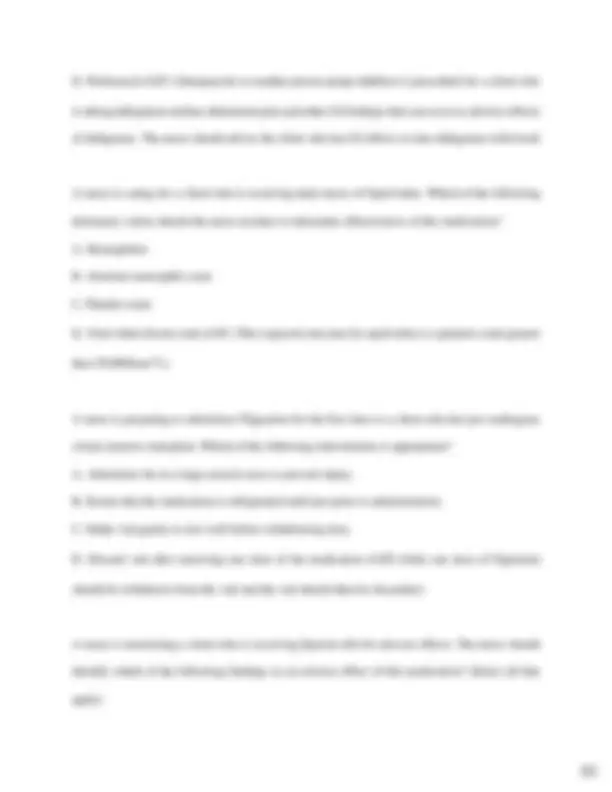
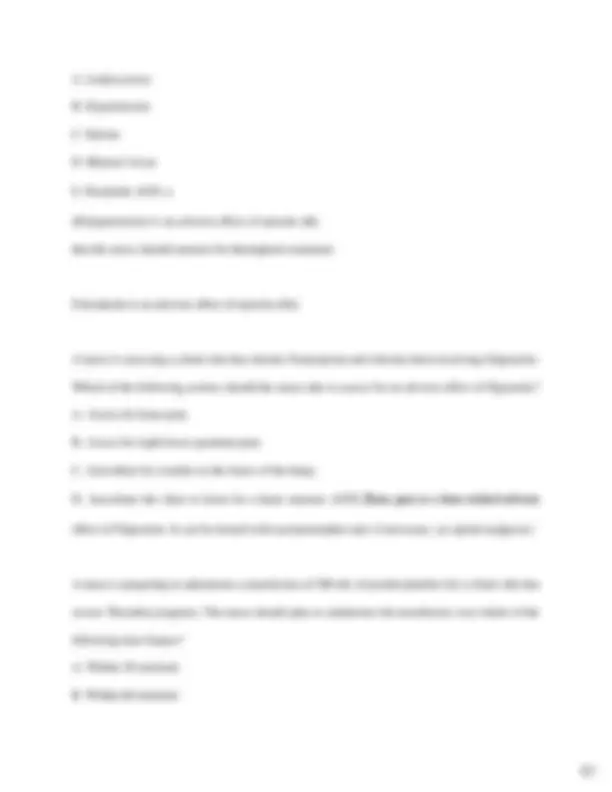
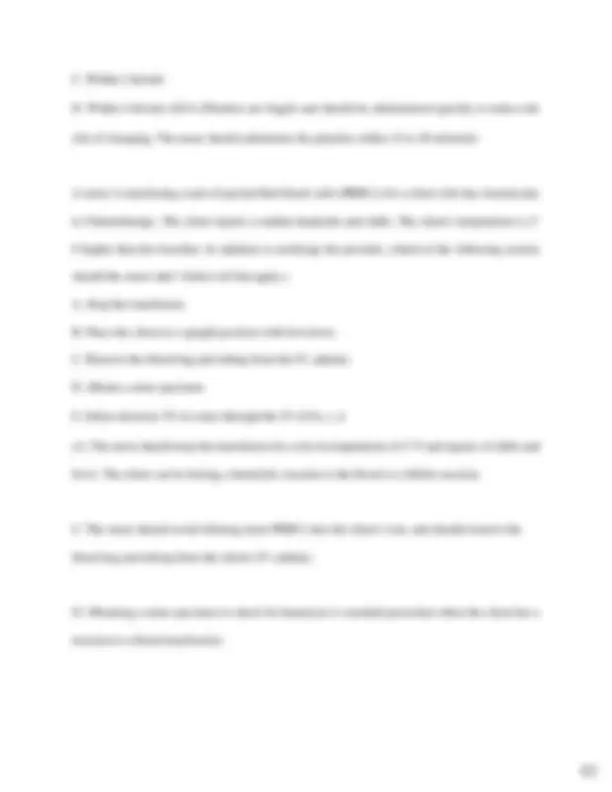
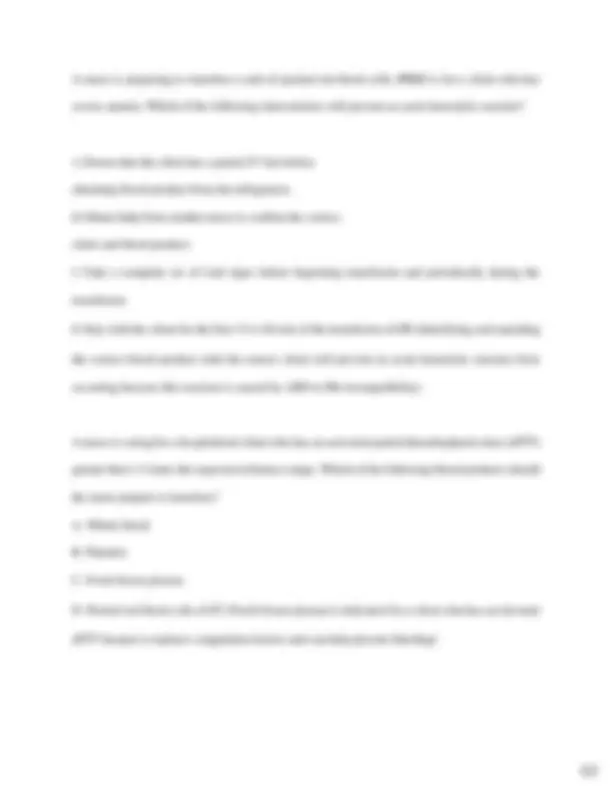
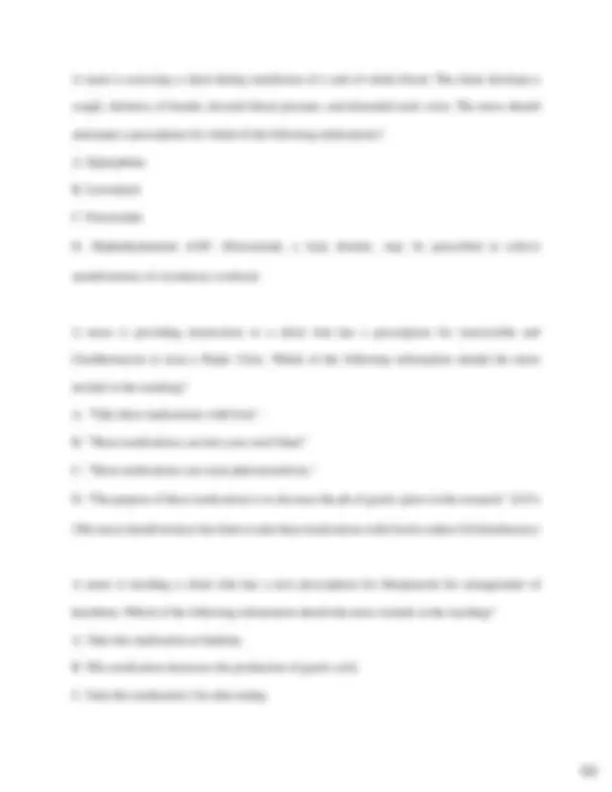
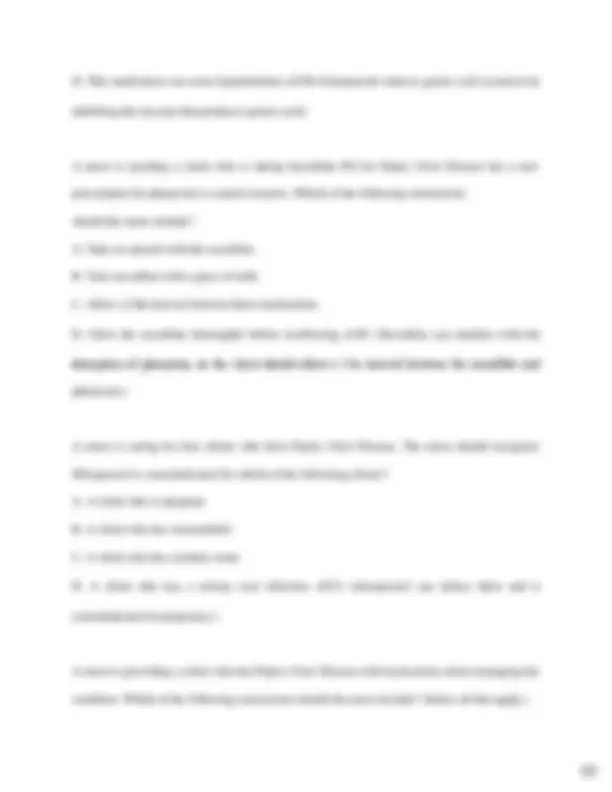
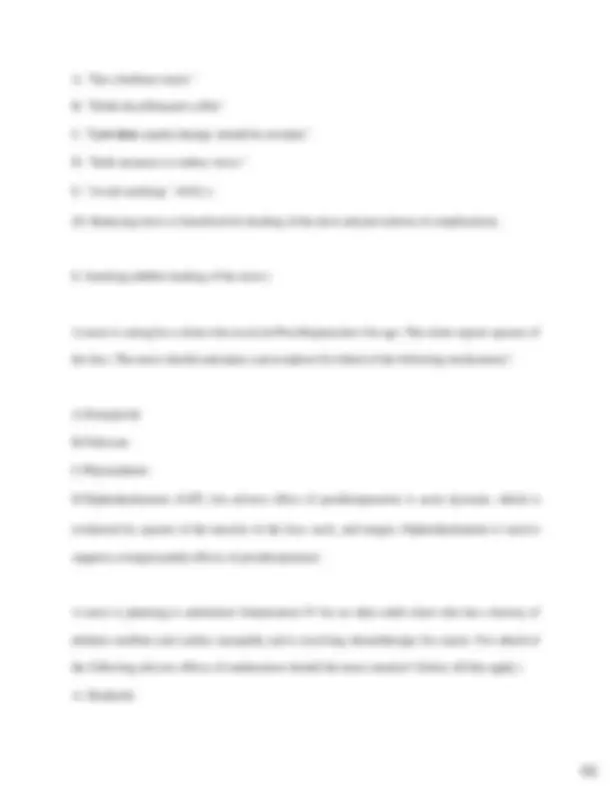
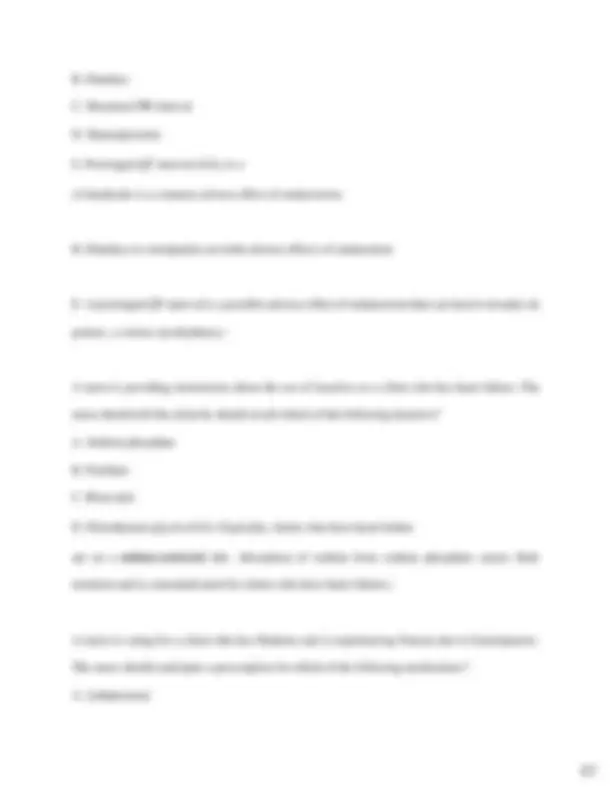

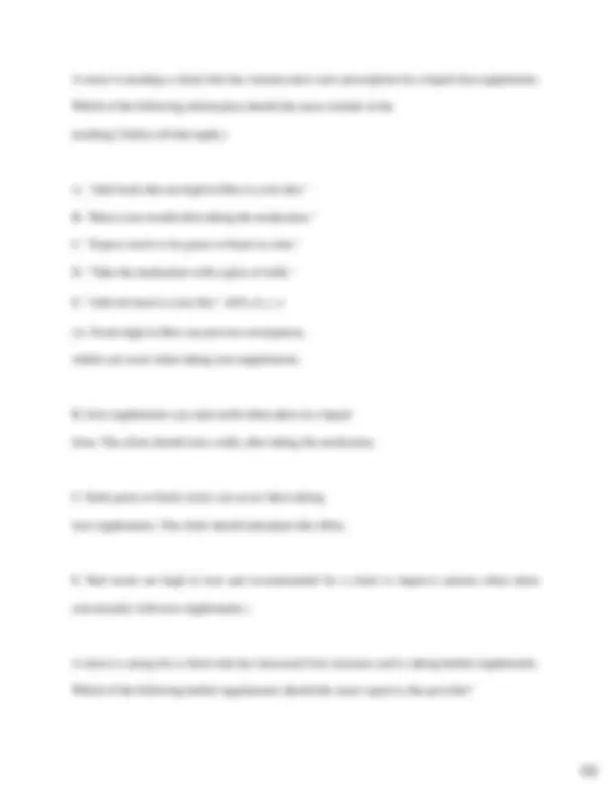
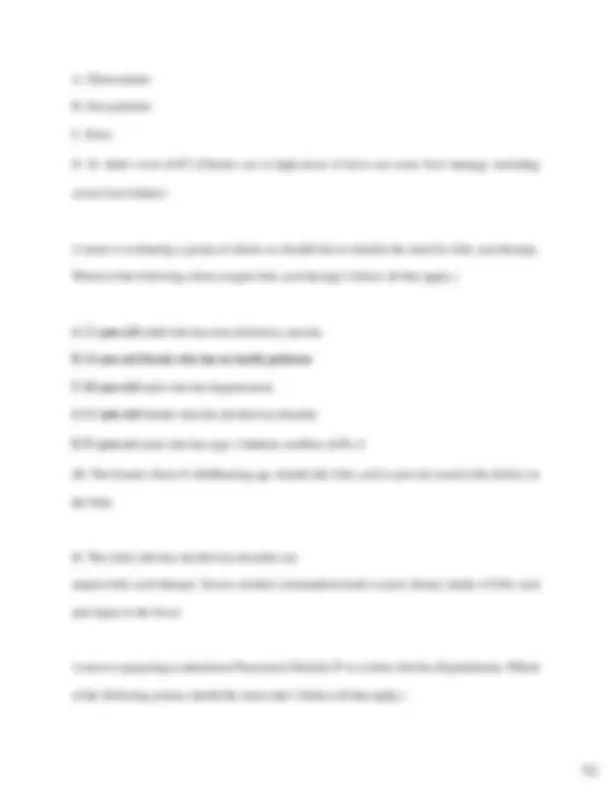
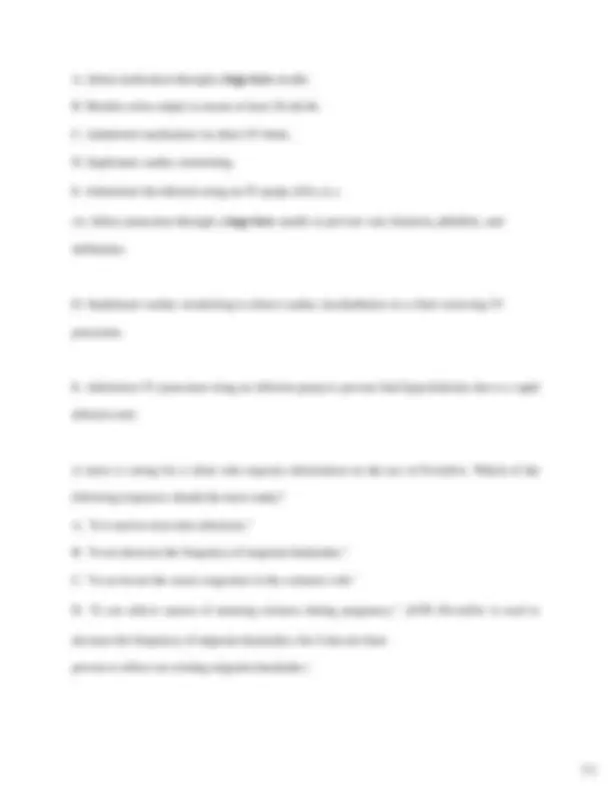
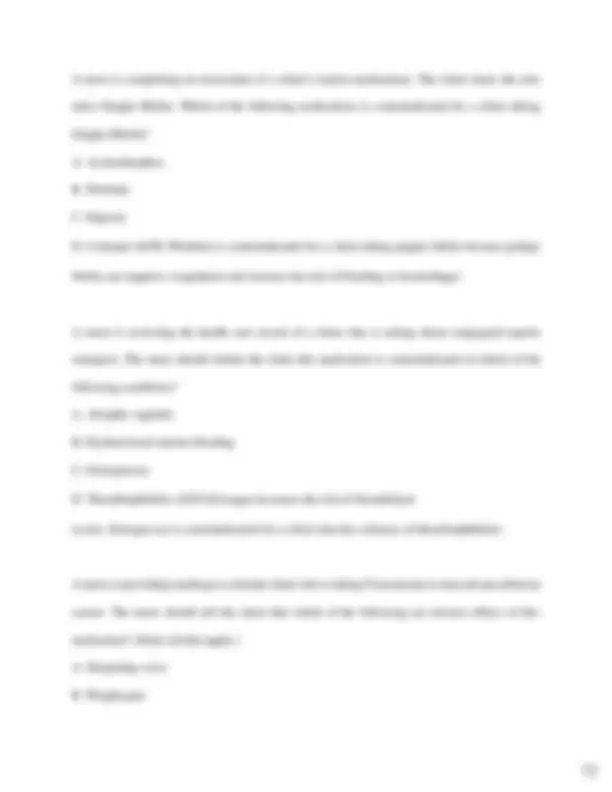
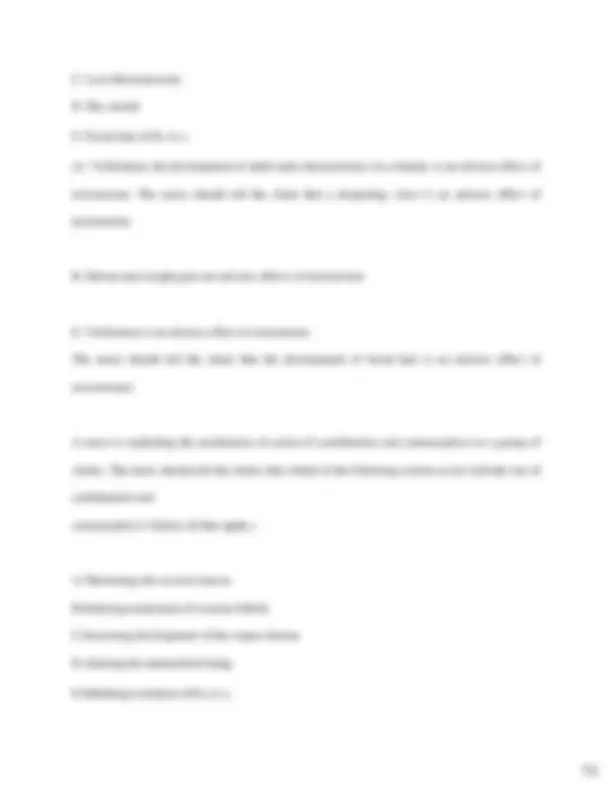
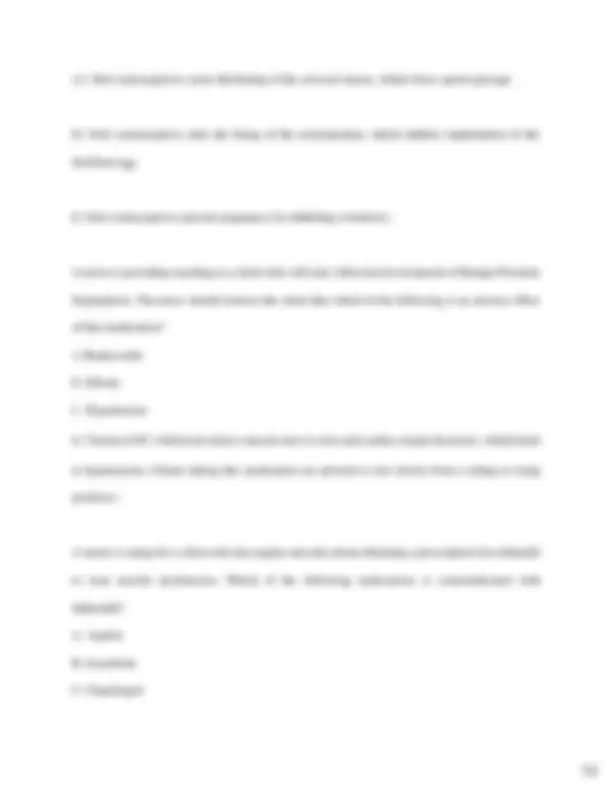
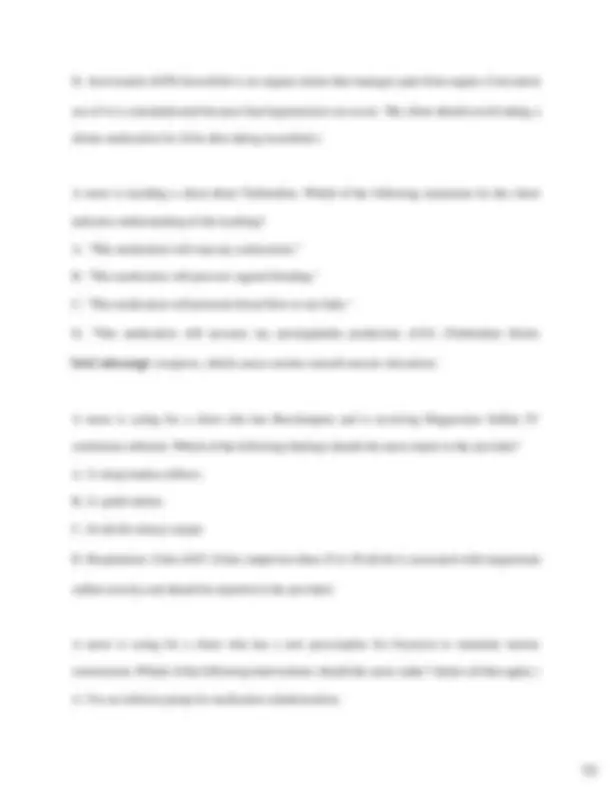
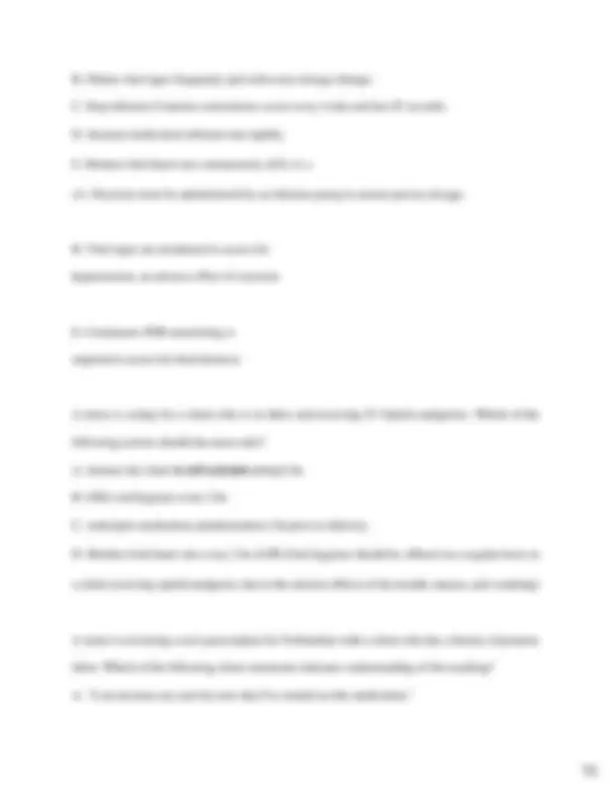
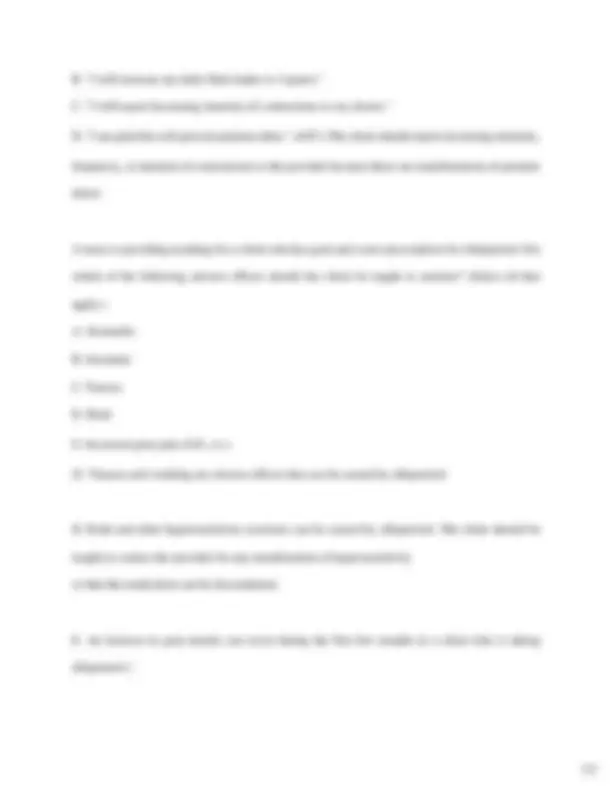
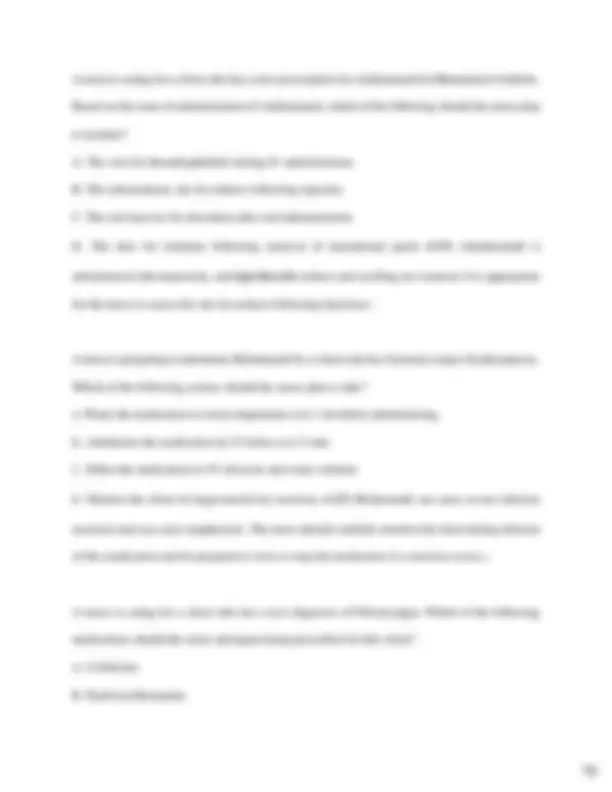
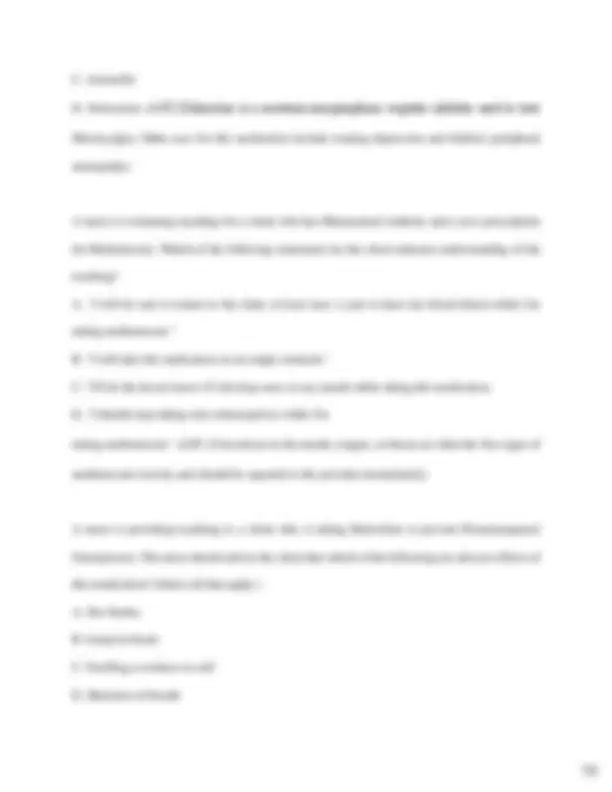

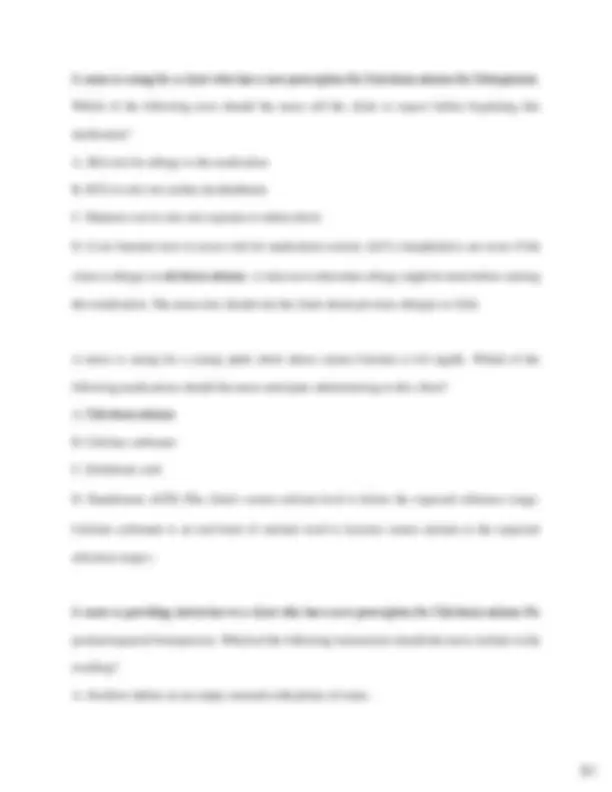
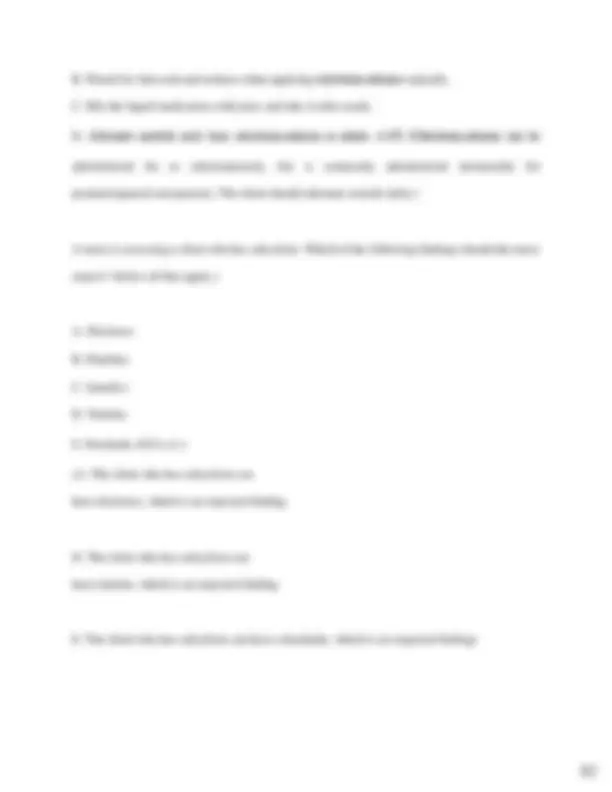
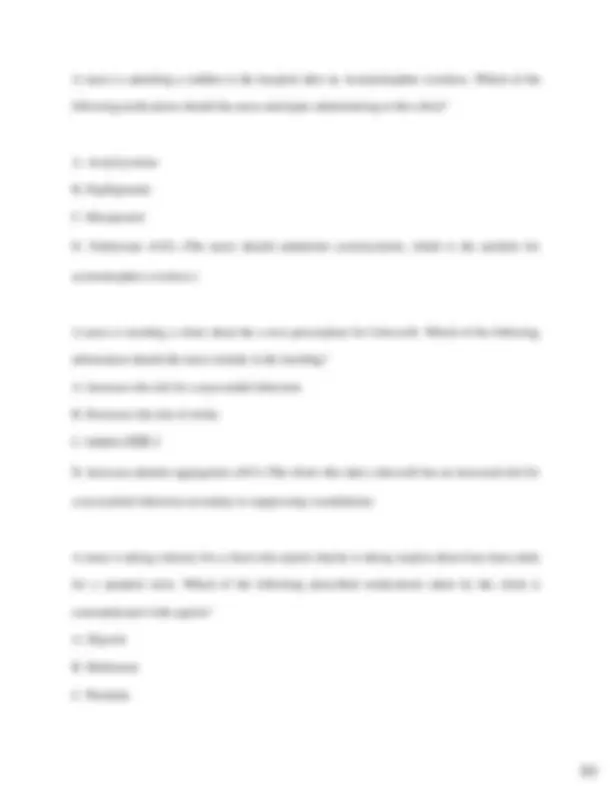
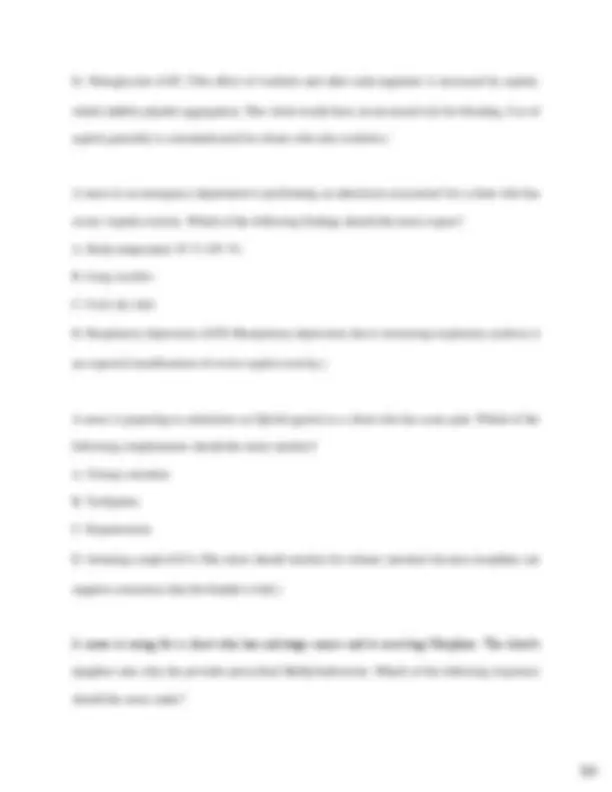
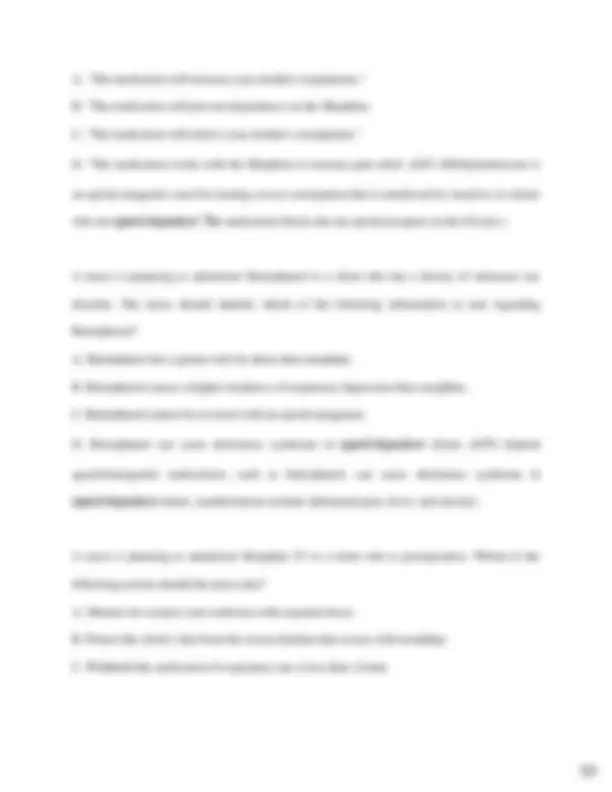
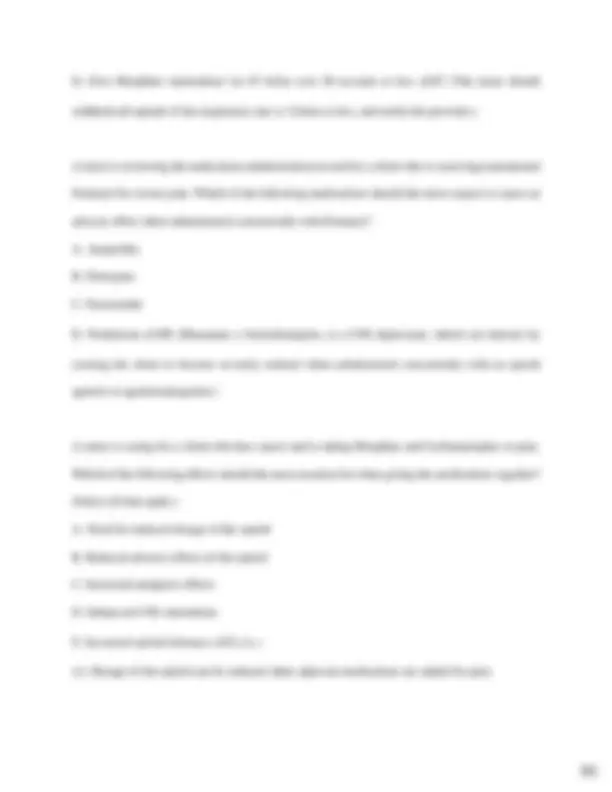
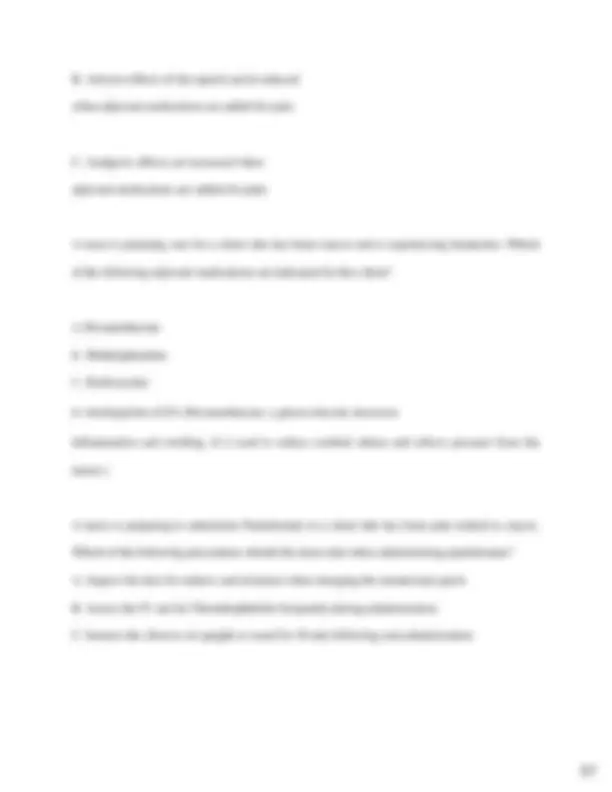
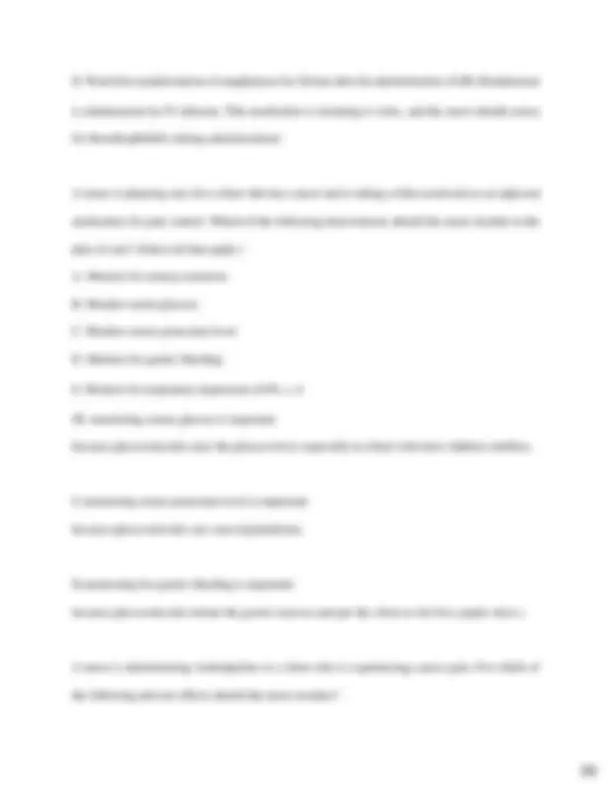
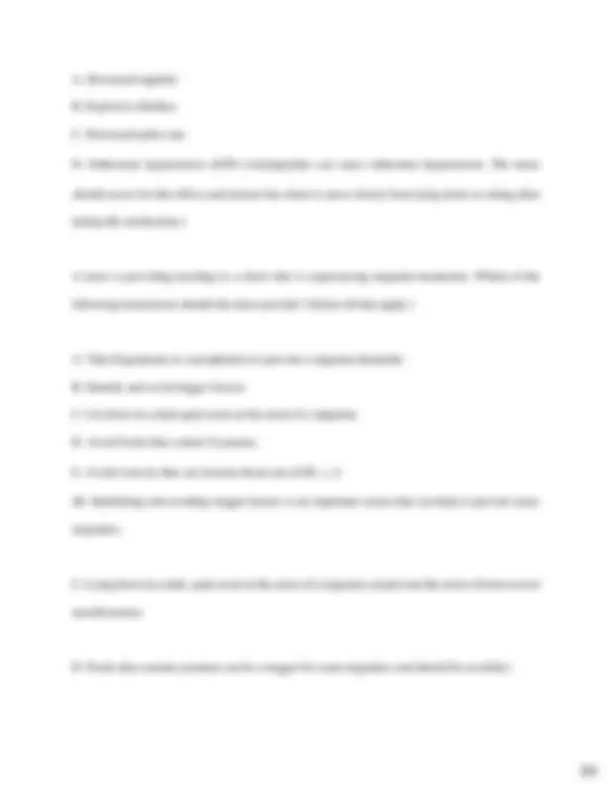
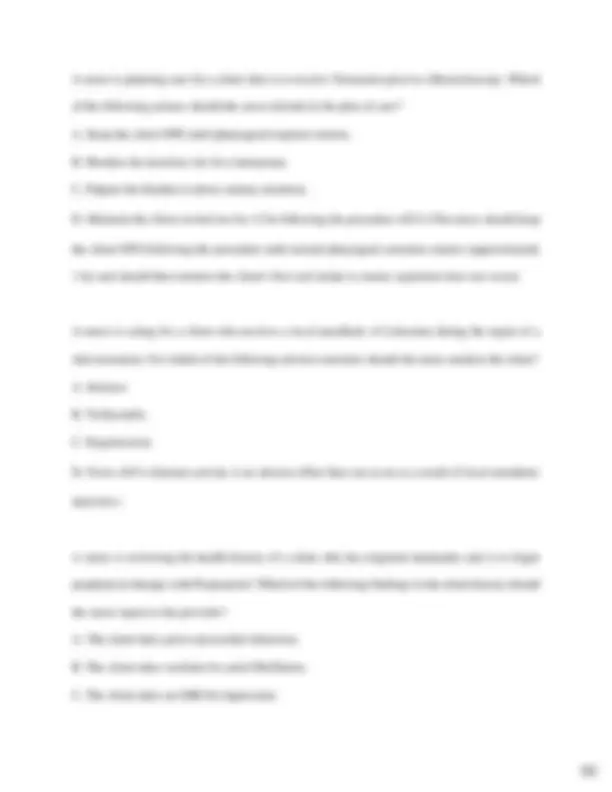
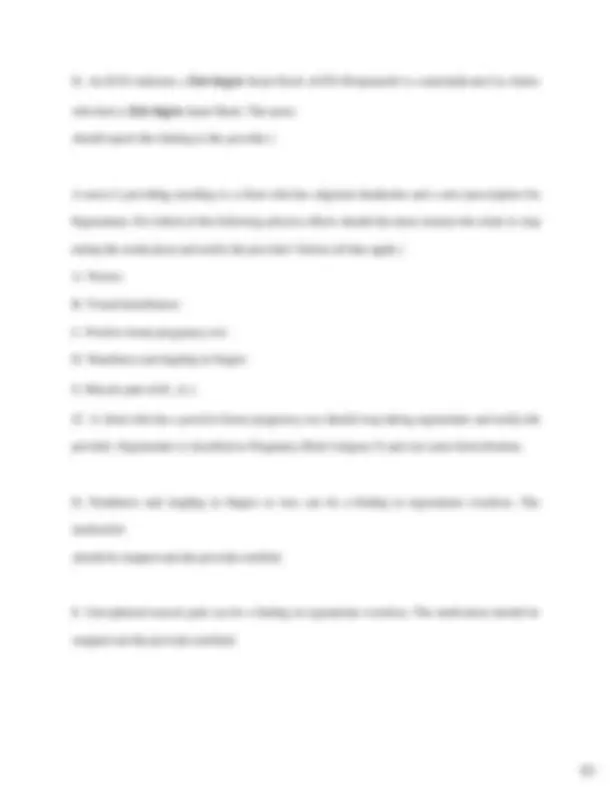
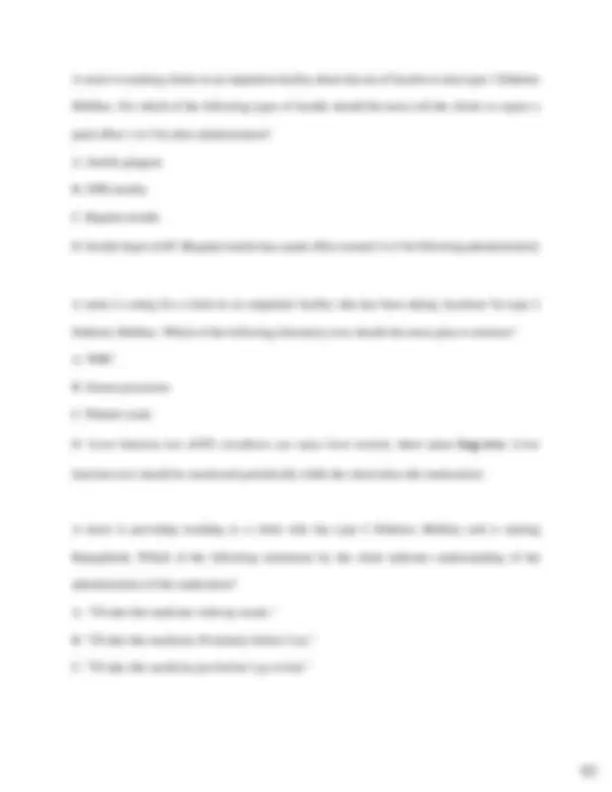
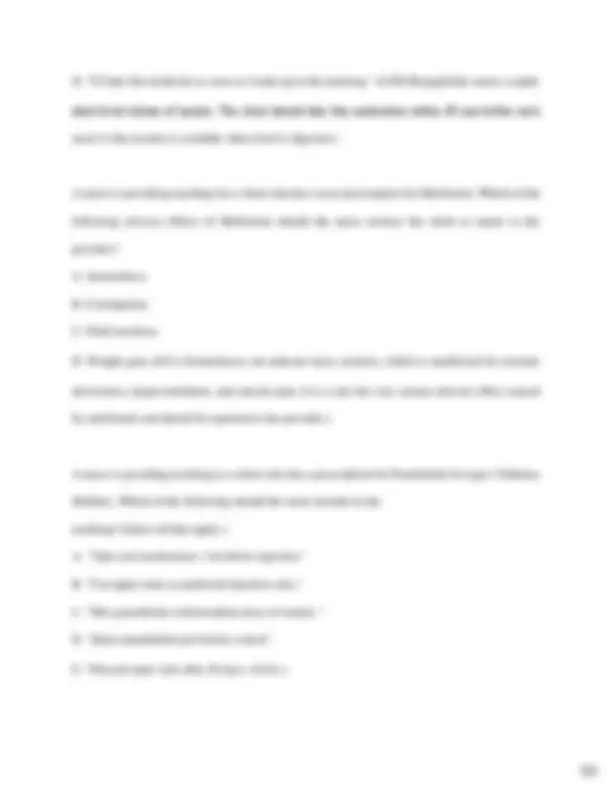
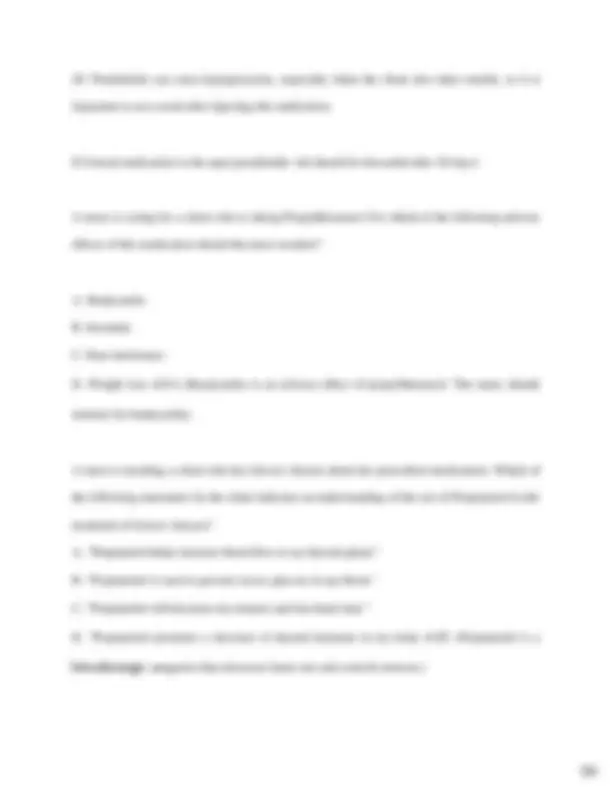
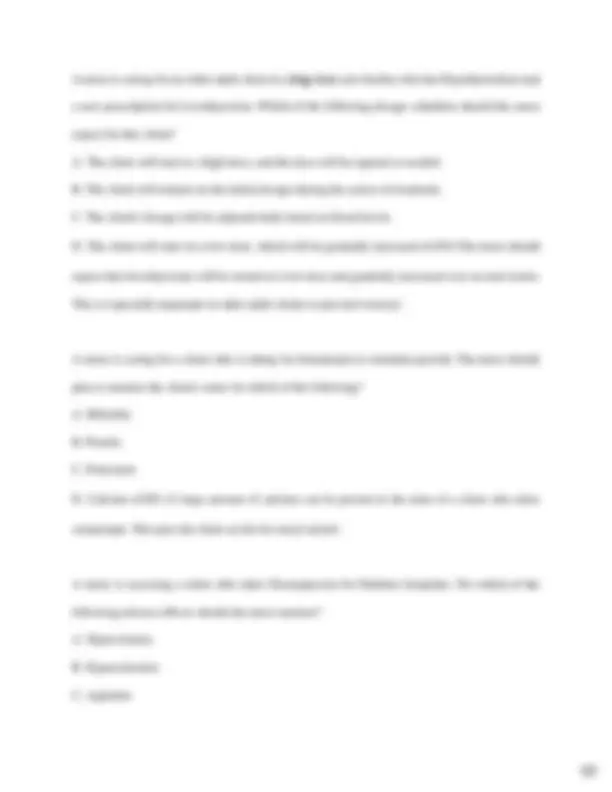
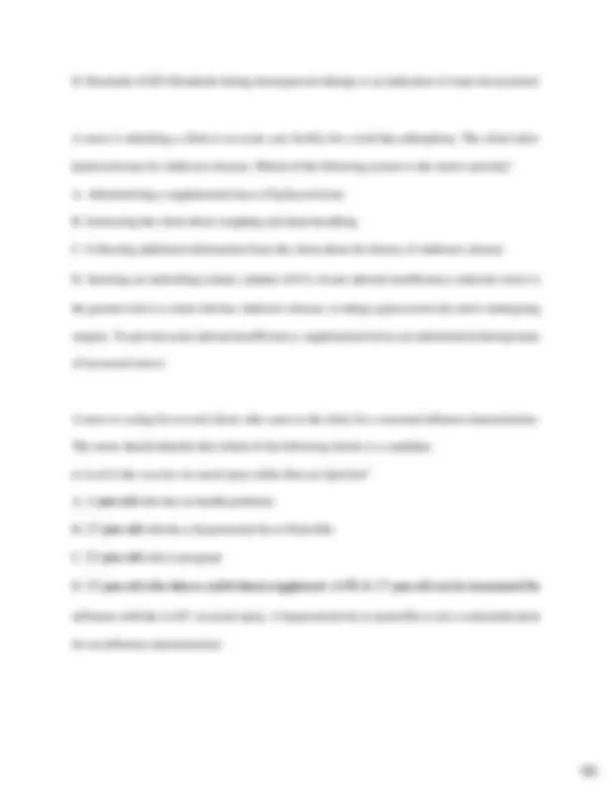
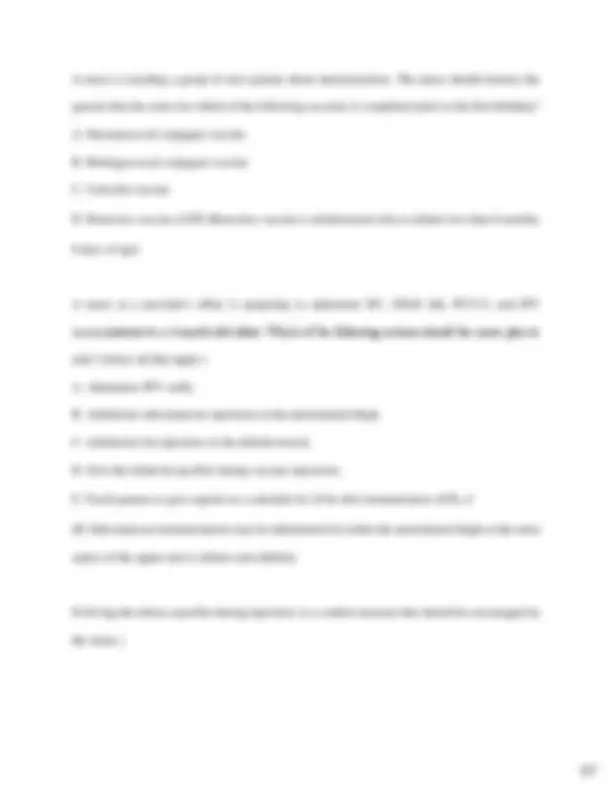
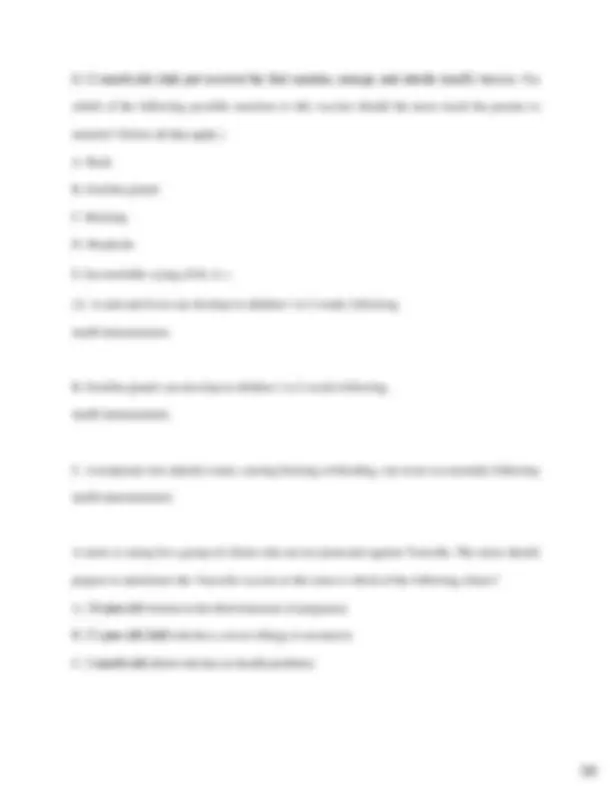
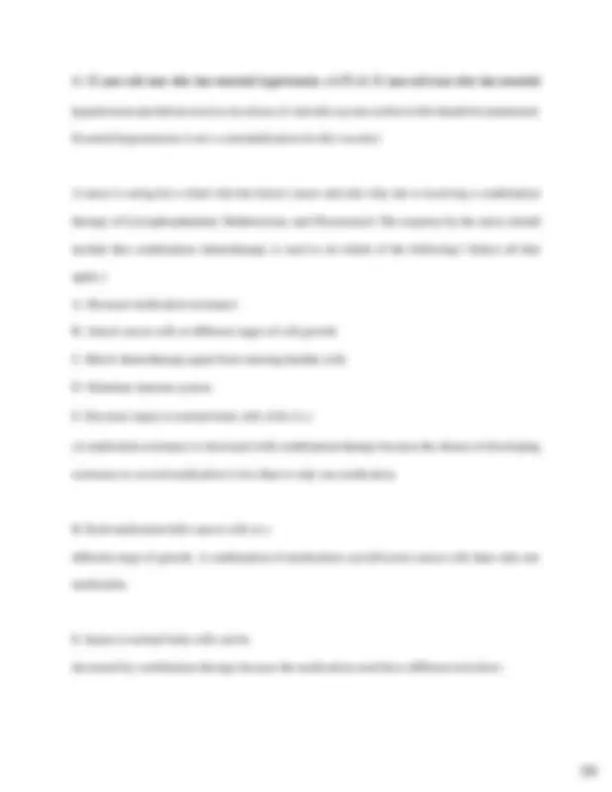



Study with the several resources on Docsity

Earn points by helping other students or get them with a premium plan


Prepare for your exams
Study with the several resources on Docsity

Earn points to download
Earn points by helping other students or get them with a premium plan
Community
Ask the community for help and clear up your study doubts
Discover the best universities in your country according to Docsity users
Free resources
Download our free guides on studying techniques, anxiety management strategies, and thesis advice from Docsity tutors
ATI Pharm Proctor Questions and Answers 2025 Latest| Updated & Verified| Graded A+| Already Passed
Typology: Exams
1 / 119

This page cannot be seen from the preview
Don't miss anything!





























































































A provider prescribes phenobarbital for a client who has a seizure disorder. The medication has a long half-life of 4 days. How many times per day should the nurse expect to administer this medication? A. One B. Two C. Three D. Four ✔✔A (Medications with long half-lives remain at their therapeutic levels between doses for long periods of time. The nurse should expect to administer this medication once a day.) A staff educator is reviewing medication dosages and factors that influence medication metabolism with a group of nurses at an in-service presentation. Which of the following factors should the educator include as a reason to administer lower medication dosages? (Select all that apply.) A. Increased renal secretion B. Increased medication-metabolizing enzymes C. Liver failure D. Peripheral vascular disease E. Concurrent use of medication the same pathway metabolizes ✔✔Answer: C, E
(C. Liver failure decreases metabolism and thus increases the concentration of a medication. This requires decreasing the dosage. E. When the same pathway metabolizes two medications, they compete for metabolism, thereby increasing the concentration of one or both medications. This requires decreasing the dosage of one or both) A nurse is preparing to administer eye drops to a client. Which of the following actions should the nurse take? (Select all that apply.) A. Have the client lie on her side. B. Ask the client to look up at the ceiling. C. Tell the client to blink when the drops enter her eye. D. Drop the medication into the center of the client's conjunctival sac. E. Instruct the client to close her eye gently after instillation ✔✔b, d, e (B. The client should look upward to keep the drops from falling onto her cornea. D. The nurse should drop the medication into the center of the conjunctival sac to promote distribution. E. The client should close her eye gently to promote distribution of the medication) A nurse is completing discharge teaching for a client who has a new prescription for transdermal patches. Which of the following statements should the nurse identify as an indication that the client understands the instructions? A. "I will clean the site with an alcohol swab before I apply the patch."
(A.maintaining skill competency and using appropriate administration techniques are legal responsibilities of the nurse C. A nurse is legally responsible for monitoring for side and adverse effects of medication D. Safeguarding of medications, such as controlled substances, is a legal responsibility of the nurse) A nurse reviewing a client's health record notes a new prescription for Lisinopril 10 mg PO once every day. The nurse should identify this as which of the following types of prescription? A. Single B. Stat C. Routine D. Standing ✔✔C (A routine or standard prescription identifies medications to give on a regular schedule with or without a termination date or a specific number of doses. The nurse will administer this medication every day until the provider discontinues it.) A nurse is reviewing a new prescription for Ondansetron 4 mg PO PRN for nausea and vomiting for a client who has Hyperemesis Gravidarum. The nurse should clarify which of the following parts of the prescription with the provider? A. Name B. Dosage
C. Route D. Frequency ✔✔D (This prescription does not include the time or frequency of medication administration. The nurse must clarify this with the prescribing provide) A nurse is admitting a client and completing a preassessment before administering medications. Which of the following data should the nurse include in the preassessment? (Select all that apply.) A. Use of herbal teas B. Daily fluid intake C. Current health status D. Previous surgical history E. Food allergies ✔✔a, c, e (A. The nurse should inquire about the client's use of herbal products, which often contain caffeine, prior to medication administration because caffeine can affect medication biotransformation C. The nurse should review the client's current health status because new prescriptions can cause alterations in current health status E. The nurse should inquire about food allergies during the preassessment to identify any potential reactions or interactions) A nurse orienting a newly licensed nurse is reviewing the procedure for taking a telephone prescription. Which of the following statements should the nurse identify as an indication that the newly licensed nurse understands the process?
A nurse is preparing to administer Haloperidol 2 mg PO every 12 hr. The amount available is haloperidol 1 mg/tablet. how many tablets should the nurse administer? (Round the answer to the nearest whole number. Do not use a trailing zero. ✔✔ 2 A nurse is preparing to administer Amoxicillin 20 mg/kg/day PO to divide equally every 12 hr to a preschooler who weighs 44 lb. The amount available is amoxicillin suspension 250 mg/5 mL. how many mL should the nurse administer per dose? (Round the answer to the nearest whole number. Do not use a trailing zero.) ✔✔ 4 A nurse is preparing to administer heparin 15,000 units subcutaneously every 12 hr. The amount available is heparin injection 20,000 units/mL. How many mL should the nurse administer per dose? (Round the answer to the nearest tenth. Do not use a trailing zero. ✔✔0. A nurse is preparing to administer acetaminophen 650 mg PO every 6 hr PRN for pain. The amount available is acetaminophen liquid 500 mg/5 mL. how many mL should the nurse administer per dose? (Round the answer to the nearest tenth. Use a leading zero if it applies. Do not use a trailing zero. ✔✔6. A nurse is preparing to administer dextrose 5% in water (D5W) 750 mL IV to infuse over 6 hr. The nurse should set the IV pump to deliver how many mL/hr? (Round the answer to the nearest whole number. Do not use a trailing zero. ✔✔ 125
A nurse is assessing a client's IV infusion site. Which of the following findings should the nurse identify as an indication of phlebitis? (Select all that apply.) A. Pallor B. Dampness C. Erythema D. Coolness E. Pain ✔✔c, e (C. Erythema at the insertion site is a manifestation of phlebitis. E.Pain at the insertion site is a manifestation of phlebitis.) A nurse manager is reviewing the facility's policies for IV therapy with the members of his team. The nurse manager should remind the team that which of the following techniques helps minimize the risk of catheter embolism? A. Performing hand hygiene before and after IV insertion B. Rotating IV sites at least every 72 hr C. Minimizing tourniquet time D. Avoiding reinserting the needle into an IV catheter ✔✔D (The nurse manager should remind the members of the team to avoid reinserting the stylet needle into an IV catheter. This action can result in severing the end of the catheter and consequently cause a catheter embolism) A nurse is preparing to initiate IV therapy for an older adult client. Which of the following actions should the nurse plan to take?
D. A client who has Peptic Ulcer Disease, takes Sucralfate, and tells the nurse she has started taking OTC Aluminum Hydroxide E. A client who has a prosthetic heart valve, takes Warfarin, and reports a suspected pregnancy ✔✔b, c, e (B. Glucocorticoids should not be taken by a client who has a possible systemic fungal infection. The nurse should recognize a contraindication and notify the provider. C. Acetaminophen is contraindicated due to toxicity for a client who has a liver disorder. The nurse should notify the provider, who can prescribe a medication that does not contain acetaminophen. E. Warfarin is a Pregnancy Category X medication, which can cause severe birth defects to the fetus. The nurse should notify the provider about the suspected pregnancy) A nurse is preparing to administer an IM dose of penicillin to a client who has a new prescription. The client states she took penicillin 3 years ago and developed a rash. Which of the following actions should the nurse take? A. Administer the prescribed dose. B. Withhold the medication. C. Ask the provider to change the prescription to an oral form. D.Administer an oral antihistamine at the same time ✔✔B (The nurse should withhold the medication and notify the provider of the client's previous reaction to penicillin so that an alternative antibiotic can be prescribed. Allergic reactions to penicillin can range from mild to severe anaphylaxis, and prior sensitization should be reported to the provider.)
A nurse is providing discharge instructions for a client who has a new prescription for an antihypertensive medication. Which of the following statements should the nurse give? A. "Be sure to limit your potassium intake while taking the medication." B. "You should check your blood pressure every 8 hours while taking this medication." C. "Your medication dosage will be increased if you develop tachycardia." D. "Change positions slowly when you move from sitting to standing." ✔✔D (Orthostatic hypotension is a common adverse effect of antihypertensive medications. The client should move slowly to a sitting or standing position and should be taught to sit or lie down if lightheadedness or dizziness occurs) A nurse is reviewing a client's health record and notes that the client experiences permanent extrapyramidal effects caused by a previous medication. The nurse should recognize that the medication affected which of the following systems in the client? A. Cardiovascular B. Immune C. Central nervous D. Gastrointestina ✔✔C (The nurse should realize that extrapyramidal effects are movement disorders that can be caused by a number of central nervous system medications, such as typical antipsychotic medications)
C. Infants have a poorly developed blood‑brain barrier, which places them at risk for adverse effects from medications that pass through the blood‑brain barrier. The nurse should administer these medications in smaller dosages. D. Because infants have more blood flowing to the skin and their skin is thin, their medication absorption is increased, making them prone to toxicity from topical medications) A nurse in a provider's office is reviewing the medical record of a client who is pregnant and is at her first prenatal visit. Which of the following immunizations may the nurse administer safely to this client? A. Varicella vaccine B. Rubella vaccine C. Inactivated influenza vaccine D. Measles vaccine ✔✔C (During influenza season, providers recommend the inactivated influenza vaccine for women who are pregnant) A nurse on a medical‑surgical unit administers a hypnotic medication to an older adult client at
D. Increased gastric motility ✔✔C (Older adults have reduced hepatic function, which can prolong the effects of medications the liver metabolizes. The client probably needs a lower dosage of the hypnotic medication) A nurse working in an emergency department is caring for a client who has Benzodiazepine toxicity due to an overdose. Which of the following actions is the nurse's priority? A. Administer flumazenil. B. Identify the client's level of orientation. C. Infuse IV fluids. D. Prepare the client for gastric lavage ✔✔B (The first action the nurse should take when using the nursing process is to assess the client. Identifying the client's level of orientation is the priority action.) A nurse is teaching a client who has a new prescription for Escitalopram for treatment of generalized Anxiety disorder. Which of the following statements by the client indicates understanding of the teaching? A. "I should take the medication on an empty stomach." B. "I will follow a low‑sodium diet while taking this medication." C. "I need to discontinue this medication slowly." D. "I should not crush this medication before swallowing." ✔✔C (When discontinuing escitalopram, the client should taper the medication slowly according to a prescribed tapered dosing schedule to reduce the risk of withdrawal syndrome.)
E. Increasing the dose of paroxetine ✔✔a, c, d (A. Concurrent administration of a low dose of buspirone is an effective measure to manage the adverse effects of paroxetine C.Using a mouth guard during sleep can decrease the risk for oral damage resulting from bruxism. D. Changing to different class of antidepressant medication that does not have the adverse effect of bruxism is an effective measure) A nurse is caring for a client who has a new prescription for Phenelzine for the treatment of depression. Which of the following indicates that the client has developed an adverse effect of this medication? A. Orthostatic hypotension B. Hearing loss C. Gastrointestinal bleeding D. Weight loss ✔✔A (Orthostatic hypotension is an adverse of effect of mAOIs, including phenelzine.) A nurse is providing teaching to a client who has a new prescription for Amitriptyline for treatment of depression. Which of the following should the nurse include in the teaching? (Select all that apply.) A. Expect therapeutic effects in 24 to 48 hr. B. Discontinue the medication after a week of improved mood.
C. Change positions slowly to minimize dizziness. D. Decrease dietary fiber intake to control diarrhea. E. Chew sugarless gum to prevent dry mouth ✔✔C, E (C. Changing positions slowly helps prevent orthostatic hypotension, which is an adverse effect of amitriptyline E. Chewing sugarless gum can minimize dry mouth, which is an adverse effect of amitriptyline) A nurse is providing discharge teaching to a client who has a new prescription for Fluoxetine for PTSD. Which of the following statements should the nurse include in the teaching? A. "You may have a decreased desire for intimacy while taking this medication." B. "You should take this medication at bedtime to help promote sleep." C. "You will have fewer urinary adverse effects if you urinate just before taking this medication." D. "You'll need to wear sunglasses when outdoors due to the light sensitivity caused by this medication. ✔✔A (Decreased libido is a potential adverse effect of fluoxetine and other SSRIs) A nurse is caring for a client who has Depression and a new prescription for Venlafaxine. For which of the following adverse effects should the nurse monitor this client? (Select all that apply) A. Cough B. Dizziness C. Decreased libido D. Alopecia E. hypotension ✔✔a, b, c
D. Request a stat repeat of the laboratory test ✔✔A (Gastric lavage is appropriate for a client who has severe toxicity, as evidenced by a plasma lithium level of 2.1 mEq/L. This action will lower the client's lithium level.) A nurse is caring for a client who has a new prescription for Lithium Carbonate. When teaching the client about ways to prevent Lithium toxicity, the nurse should advise the client to do which of the following? A. Avoid the use of acetaminophen for headaches. B. Restrict intake of foods rich in sodium. C. Decrease fluid intake to less than 1,500 mL daily D. Limit aerobic activity in hot weather ✔✔D (The client should avoid activities that have the potential to cause sodium/water depletion, which can increase the risk for toxicity) A nurse is assessing a client who takes Lithium Carbonate for the treatment of Bipolar disorder. The nurse should recognize which of the following findings as a possible indication of toxicity to this medication? A. Severe hypertension B. Coarse tremors C. Constipation D. Muscle spasm ✔✔B (Coarse tremors are an indication of toxicity)
A nurse is caring for a client who has a new prescription for Valproic Acid. The nurse should instruct the client that while taking this medication he will need to have which of the following laboratory tests completed periodically? (Select all that apply.) A. Thrombocyte count B. Hematocrit C. Amylase D. Liver function tests E. Potassium ✔✔A, c, d (A.Treatment with valproic acid can result in thrombocytopenia. The client's thrombocyte count should be monitored periodically. C.Treatment with valproic acid can result in pancreatitis. The client's amylase should be monitored periodically. D.Treatment with valproic acid can result in hepatotoxicity. The client's liver function should be monitored periodically.) A nurse is preparing a teaching plan for a female client who has Bipolar disorder and a new prescription for Carbamazepine. Which of the following instructions should the nurse include in the teaching? (Select all that apply.) A. "This medication can safely be taken during pregnancy." B. "Eliminate grapefruit juice from your diet." C. "You will need to have a complete blood count and carbamazepine levels drawn periodically."